THE JOURNEY OF [GM] CROP CULTIVATION
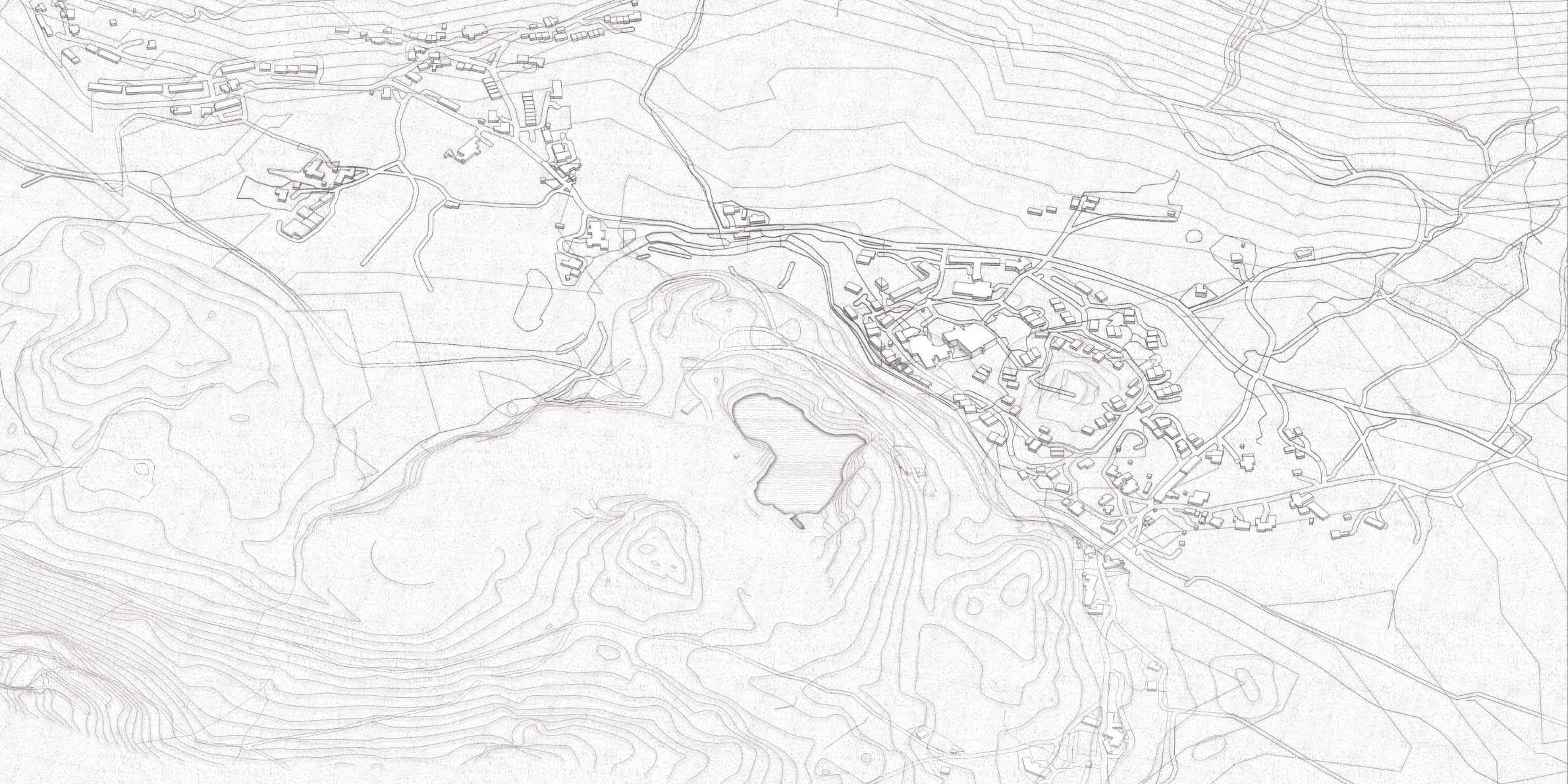
Manchester School of Architecture
Infrastructure Space Studio 3

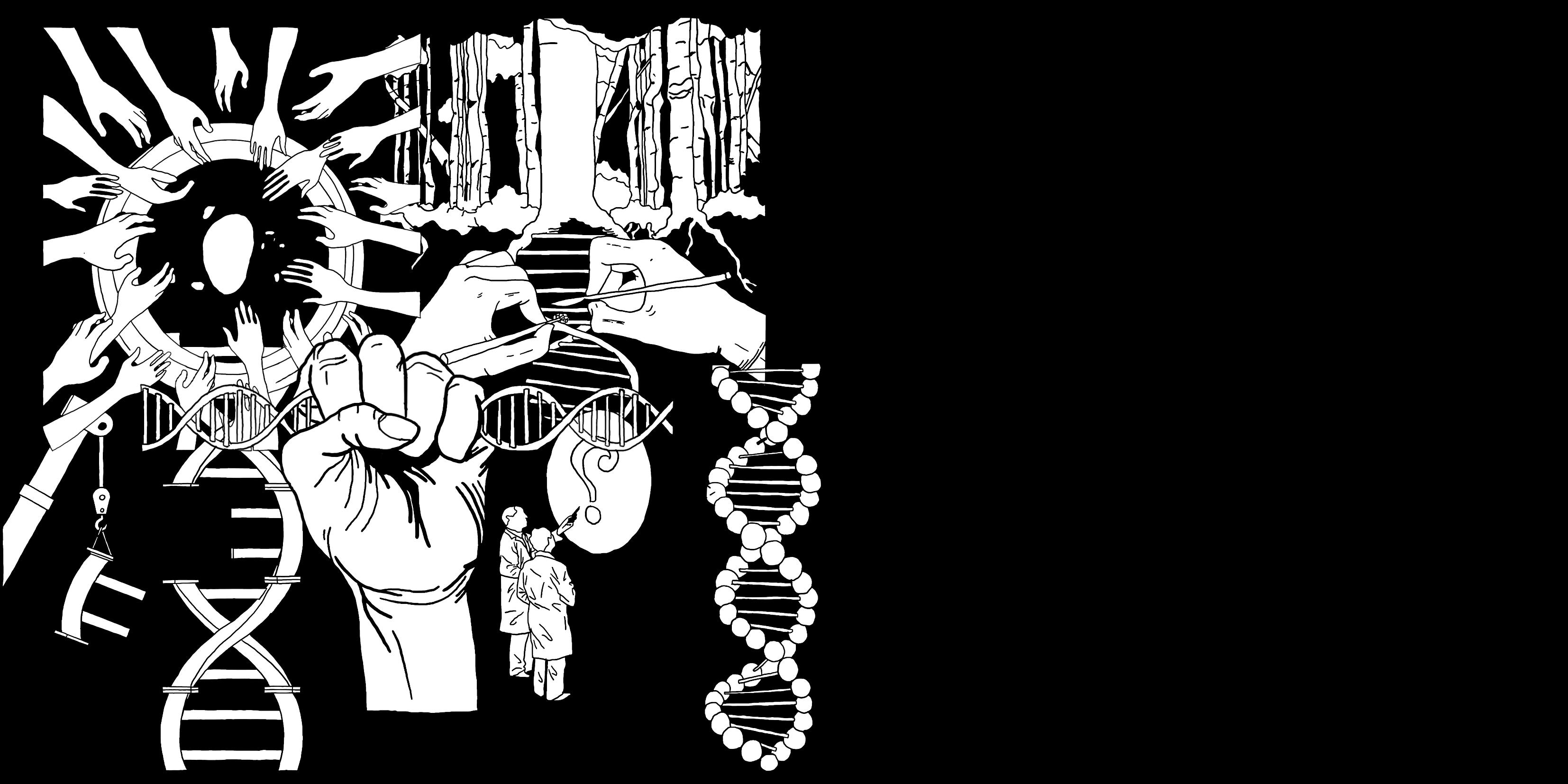
+ Conceptual Diagram Flow of Genetic Modified Crop





Manchester School of Architecture
Infrastructure Space Studio 3


+ Conceptual Diagram Flow of Genetic Modified Crop



This is the first stage in which scientists conduct genetic modification studies to create new crop types with desirable characteristics, such as drought resistance or enhanced yield. The research laboratory is outfitted with cutting-edge equipment for genetic engineering and molecular biology research. It should include dedicated greenhouse laboratories, clean rooms, and equipment sections, as well as suitable ventilation and containment methods for working with genetically modified organisms.

To protect human health and environmental safety, genetically modified crops must first receive regulatory approval from government authorities before being commercially farmed. A legal office or regulatory affairs department is in charge of obtaining the appropriate permits and following compliance procedures. Architecturally, this area should include offices for legal and regulatory specialists, consulting spaces, and storage for regulatory papers.
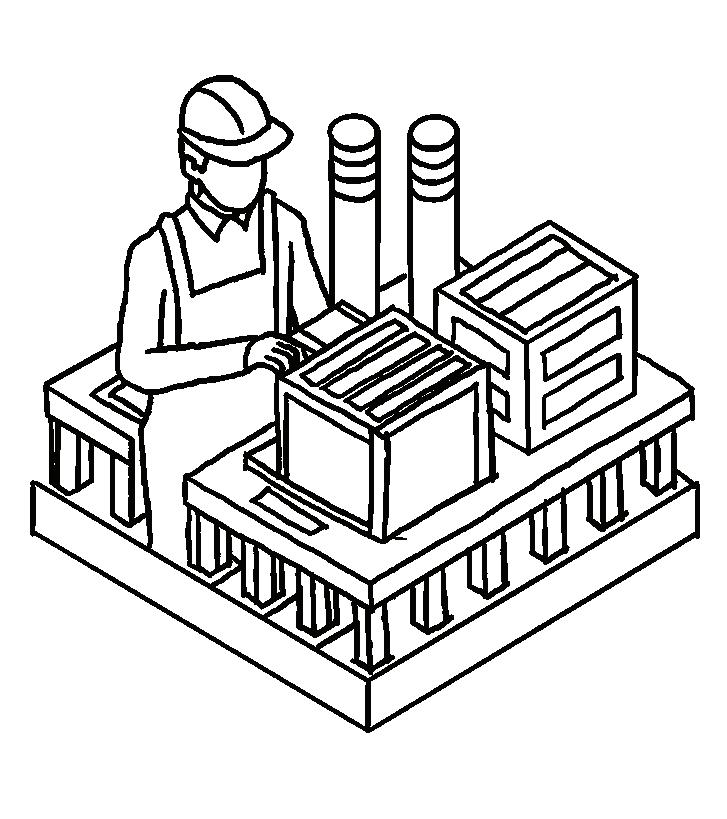
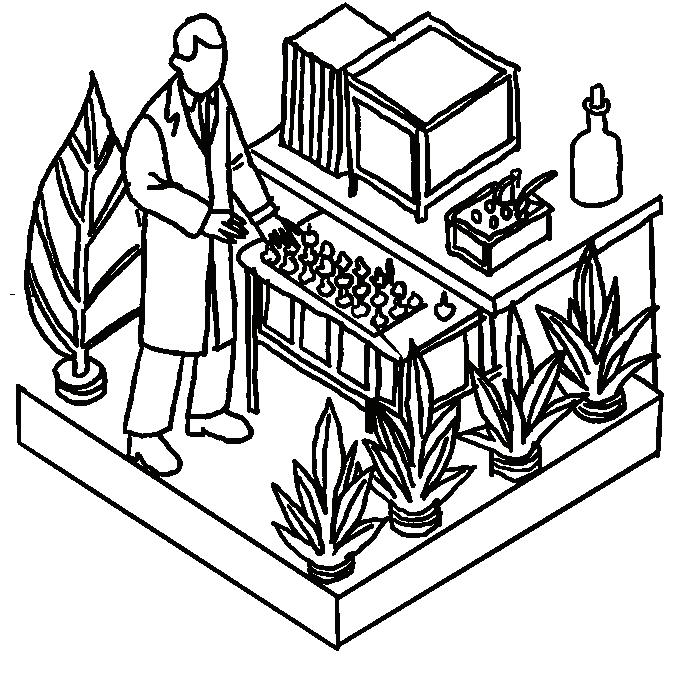
Once genetic alterations have been identified in the lab, field trials are carried out to assess the performance of the changed crops under real-world conditions. Field trial spaces are outdoor regions set aside for growing and monitoring experimental crops. These areas should be planned to accommodate diverse crop plots, irrigation systems, and data collection infrastructure. To avoid cross-contamination, security and isolation from non-modified crops are other important considerations.

Once regulatory approval is acquired, genetically modified seed production can begin. Seed production factories are specialized facilities that cultivate, prepare, and package modified seeds before distributing them to farmers. Architecturally, these industries require regulated settings to ensure seed purity and quality. They comprise climatecontrolled production spaces, seed processing and packaging lines, storage facilities, and quality control laboratories.
Finally, genetically engineered crops are grown on a big scale in agricultural fields or agro hub facilities. Cultivation spaces comprise farms or greenhouse complexes where modified crops are cultivated commercially. These spaces should optimize field or greenhouse layout to ensure effective planting, irrigation, and harvesting. The design should take into account worker facilities, equipment storage, and processing spaces.



The limited amount of cultivable land in Cumbria poses a barrier to the expansion of agriculture and the assurance of food security. It is essential to invest in advanced farming technologies and sustainable land management practices in order to maximise land utilisation and enhance productivity.
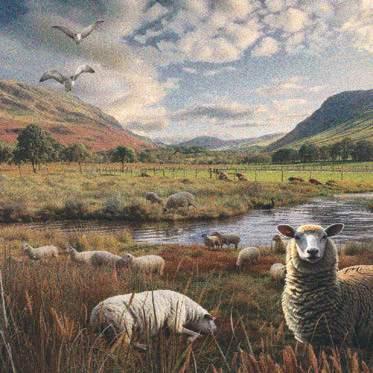
The decline in biodiversity in Cumbria poses a risk to the fragile equilibrium of its ecosystems and endangers the area’s natural legacy. It is crucial to incorporate conservation initiatives into nearby establishments, such as establishing wildlife corridors and adopting sustainable land management practices, in order to protect biodiversity and maintain the ecosystems.

The post-industrial abandoned landscapes in Cumbria hold significant untapped potential for the revitalization of the community and regeneration of the area. Transforming abandoned locations into multifunctional developments, incorporating parks, as well as centres for agriculture, can revitalise these areas, stimulating economic expansion and improving the attractiveness of the region.
+ Post Industrial Landscape
+ Biodiversity Distruption
+ Natural Landscape
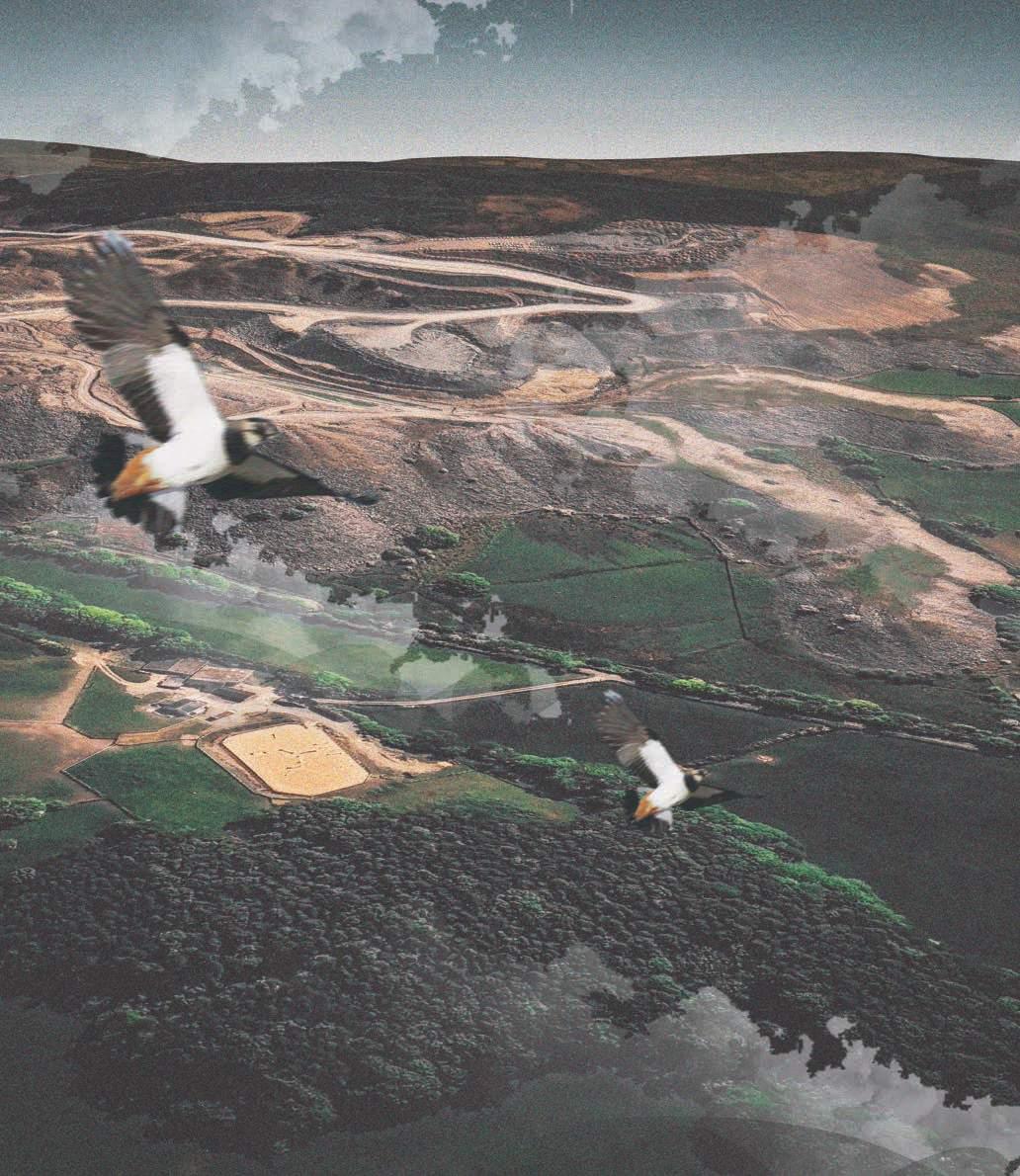

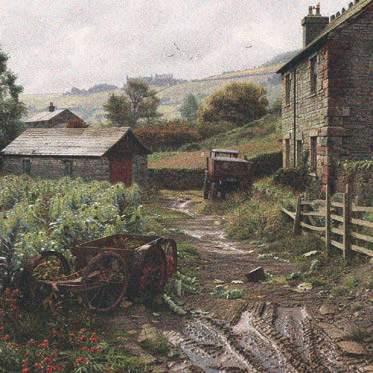
The traditional agricultural methods employed in Cumbria may restrict both the effectiveness and long-term viability of farming practices. By adopting contemporary agricultural practices like precision farming, it is possible to enhance productivity while safeguarding the region’s agricultural legacy and environmental soundness.

The lack of economic diversity in Cumbria limits its potential for development. The implementation of a diversified economic structure, encompassing sectors such as tourism, renewable energy, and technology, can foster a robust economy by diminishing reliance on individual industries, while simultaneously stimulating innovation and facilitating expansion.

The scarcity of employment prospects for young people in Cumbria contributes to the ongoing trend of emigration and impedes the overall well-being of the community. By implementing vocational training programmes and promoting entrepreneurship, it is possible to develop a highly skilled workforce and motivate young individuals to remain in the area and make valuable contributions to the local economy.
+ Ageing Population
+ Limited Economy Opportunity
+ Farming Effectivity
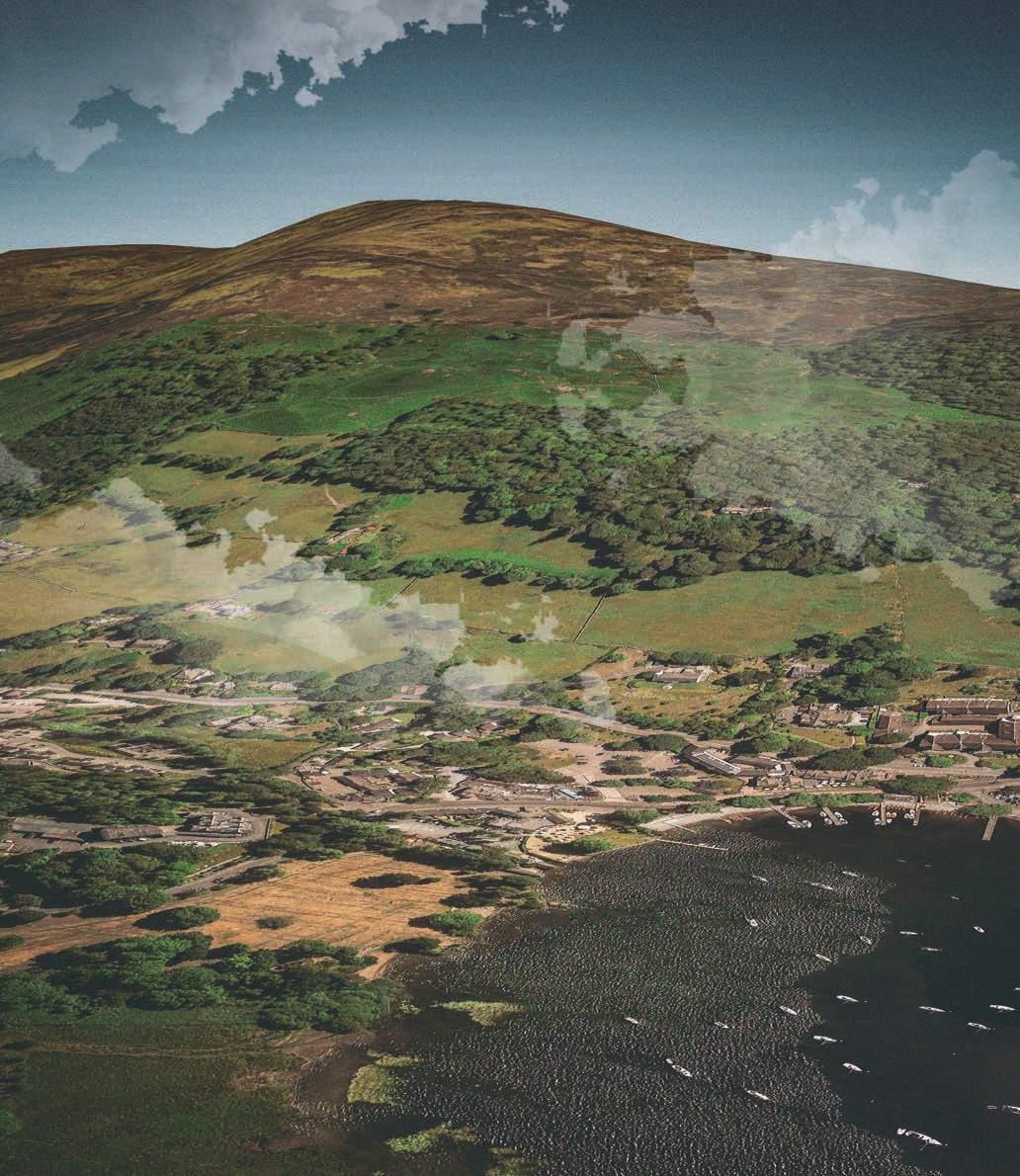

Carlisle, Cumbria’s county town, has a mix of urban and rural districts, with agriculture playing an important role in the local economy. The surrounding region is filled with farms providing a diverse range of agricultural products, including dairy and meat, grains, and vegetables. Carlisle’s agricultural sector is supported by agricultural universities, research institutes, and industry associations.
Penrith, located on the eastern side of the Lake District, is an agricultural market town with a rich farming past. The good soil and suitable climate support a wide range of crops, including grains, fruits, and vegetables. Penrith also serves as a distribution hub for agricultural goods throughout Cumbria.
In Cumbria, notably in the Lake District and adjacent regions like Whitehaven, Egremont, Grizdale, Kendal, Penrith, and Carlisle, edible agriculture is inextricably linked to the local environment, climate, and cultural legacy.
Cumbria’s location, climate, and cultural heritage impact the relationship of edible agriculture, which includes the Lake District, Whitehaven, Egremont, Grizdale, Kendal, Penrith, and Carlisle. Agriculture is an important component of the local economy and identity, with farmers using a combination of traditional and contemporary techniques to produce food responsibly for both local consumption and larger markets.
Agriculture and fishing have always been the principal industries in these coastal villages. In recent years, there has been a trend towards diversification, with some agricultural land being repurposed for residential or commercial complexes. Agriculture remains important, with farms providing a variety of crops and cattle.
Grizdale is located in the northern portion of the Lake District and is known for its rural environment and agricultural background. Farmers in the area adapt to the difficult terrain and weather circumstances, allowing them to produce both animals and crops.
The Lake District, known for its breathtaking natural beauty, is not only a popular tourist destination but also home to a variety of agricultural techniques. While much of the land is dedicated to livestock farming, particularly sheep farming for wool and meat, there are also portions suited for arable farming and horticulture, such as fruit and vegetable growing.
Kendal, one of Cumbria’s main towns, serves as a hub for agricultural activity in the surrounding area. The town is famous for its agricultural markets and gastronomic festivals, which feature locally made goods. Kendal agriculture ranges from traditional traditions to more contemporary approaches, reflecting the region’s diverse farming community.


The post-industrial landscape system repurposes places such as quarries into genetically modified research facilities. Phasing begins with a single quarry in Cumbria and subsequently spreads globally. This comprises adaptive reuse of industrial land, boosting sustainable agriculture, and promoting scientific innovation, while taking into account local and global environmental settings and socioeconomic issues.
PHASE 3 : Expand Globally
Advocate nationally for quarry rehabilitation benefits. Develop policies, collaborate with policymakers, and create platforms for knowledge exchange. Foster international collaboration and pursue continuous improvement in quarry restoration for agriculture.
PHASE 2 : Expand to other quarries
Scaling Up: Expand the project to include other quarries in Cumbria, building on the success of Phase 1. Improve efficiency by sharing knowledge, implementing adaptive management, and forming collaborative relationships. Engage communities and adapt plans in response to feedback to ensure long-term growth.
PHASE 1 : Select one quarry area
Research and Assessment: Evaluate Elterwater Quarry for a pilot project to establish and demonstrate sustainable agricultural approaches. Engage stakeholders, develop a restoration strategy, educate the community, and track progress toward agricultural viability.


+ The Site
+ The Landscape
+ The Town
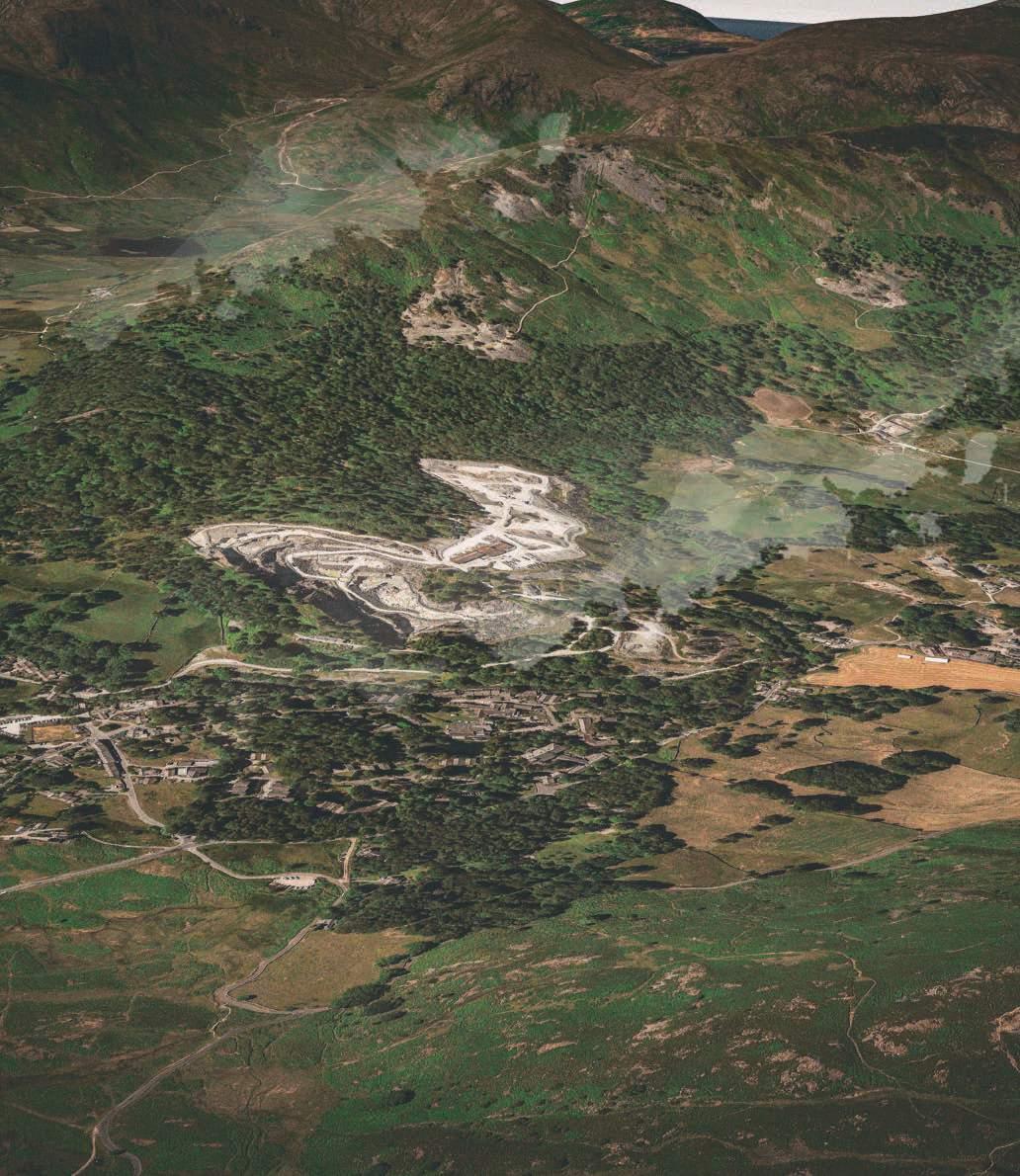

Natural Beauty and Biodiversity
The location of Elterwater within the Lake District National Park provides stunning landscapes and varied ecosystems, making it an optimal setting for agricultural research. This biodiversity facilitates the investigation of genetic modification methods to improve crop productivity and resilience, while also safeguarding indigenous plant species.
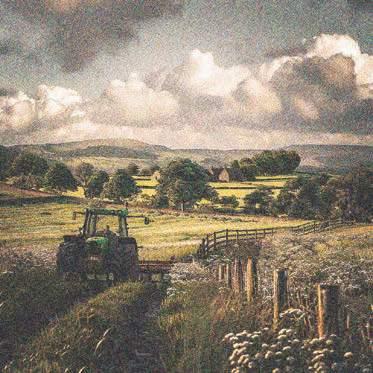
Agricultural
Heritage
Elterwater has a significant agricultural heritage that has influenced its rural scenery and economy. The genetic modification research centre can uphold this tradition by incorporating contemporary agricultural technologies with ancestral wisdom, thereby promoting sustainable farming practices that uphold the region’s cultural legacy.

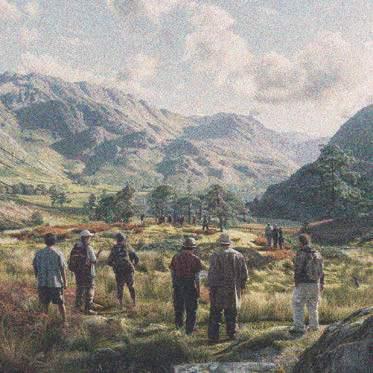
Tourism and Community Engagement
The allure of Elterwater to tourists provides the genetic modification research centre with a chance to actively interact with the local community and tourists. The facility promotes comprehension of agricultural innovation and encourages sustainable farming practices and community engagement through educational tours and agritourism activities.


In England, gene editing has been subject to stringent regulation, similar to the restrictions imposed by EU law on the commercialization of genetically modified (GM) crops. The commencement of Brexit has allowed the Westminster government to loosen regulations pertaining to emerging technologies.
“ The Genetic Technology Act is fantastic news for British consumers and farmers. Precision Breeding technologies are the future of food production not just at home, but around the world, and this Act will put our nation at the forefront of this revolution. ”
- Food Minister, Mark Spencer-
The legislation was enacted on Thursday 23 March 2023. It represents a significant advancement towards promoting growth and innovation in new technologies, strengthening food security amidst climate change, and establishing England as a global leader in agri-food innovation.
Precision breeding utilizes advanced techniques like gene editing to modify the genetic makeup of organisms, resulting in the development of advantageous characteristics in plants.
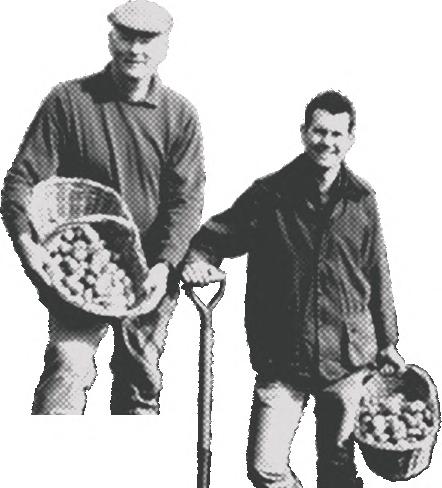
“ This is an important time for agricultural science. The ability to use gene editing to make precise, targeted changes to the genetic code of organisms, in a way that can mimic traditional breeding, enables development of new crop varieties that are more resistant to pests, healthier to eat, and more resilient to drought and heat as climate changes. ”
- Defra’s Chief Scientific Adviser Gideon Henderson-

The Food Standards Agency is obligated to engage in consultation regarding new legislation on food and feed, as well as conduct a meticulous risk assessment for precision-bred food and feed prior to any alterations in the market.

The legislation aims to enable farmers to cultivate crops with resistance to drought and disease, reduce the use of fertilizers and pesticides, and facilitate the breeding of animals immune to harmful diseases. It allows for the development of advantageous traits in plants in a shorter timeframe compared to conventional breeding methods, leading to more versatile, adaptable, and abundant foods in the future.



The Food Standards Agency and the Advisory Committee on Novel Foods and Processes (ACNFP) conduct the safety assessments of genetically modified foods. Evaluations involve an in-depth analysis of:
GM foods are only authorised for sale if they are judged: whether the foods could be toxic their nutritional value whether they could cause allergic reactions
not to present a risk to health not to mislead consumers not to have less nutritional value than their non-GM counterpart
FSA is in favour of offering customers a choice. Despite thorough safety assessments, they acknowledge that some consumers will still refuse to purchase or consume genetically modified (GM) foods. The United Kingdom requires food labels to indicate whether:
contain or consist of genetically modified organisms (GMOs) contain ingredients produced from GMOs
This mandates the labelling of all genetically modified foods, including flour, cooking oils, and glucose syrups derived from GM sources. Any genetically modified (GM) food that is sold in its own packaging must have a label stating that it is GM.
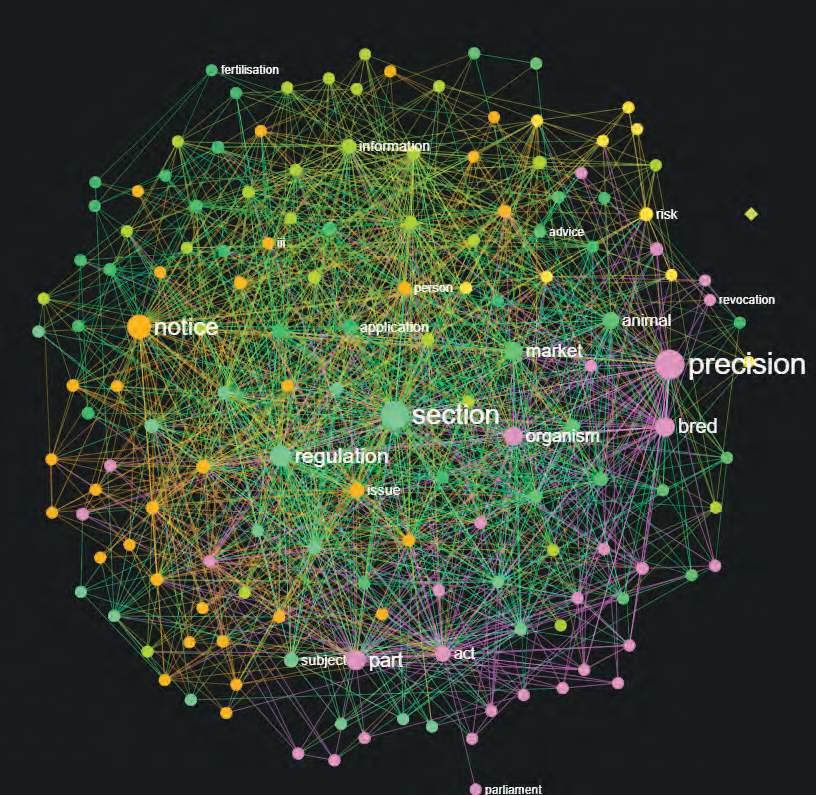
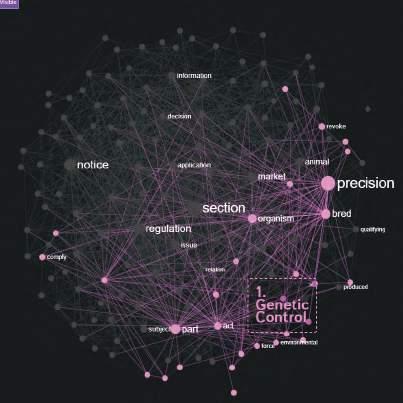
In England, precision breeding involves using genetic modifications to introduce specific traits into organisms. Stringent regulatory measures dictate compliance, with failure to comply risking the revocation of the act. Designated inspectors oversee compliance to ensure adherence to particular provisions. Regulations require thorough risk assessments before genetically modified food can be marketed. An advisory committee supervises applications related to contemporary embryos, establishes fees, and enforces regulations for the well-being of the environment.

The legislation specifies that individuals or organisations breeding genetically modified organisms adhere to stringent regulations and inform the relevant inspector. The notice must contain a thorough description of the organisms, their intended use, and the associated production costs. Noncompliance with these regulations may lead to the breeder’s licence being revoked and possible legal consequences. This act is designed to meticulously oversee and control genetically modified organisms to avoid any possible adverse impacts on the environment and public health.

The Precision Breeding Act in England sets regulations for individuals involved in creating, selling, and importing precision bred organisms. It gives the government the power to withdraw licences from those who violate the standards. Offenders are subject to consequences, such as fines or imprisonment, specified in the legislation. This legislation is crucial for ensuring the safe and ethical use of precision bred organisms, including genetically modified crops, to promote accountability and responsible practices in agricultural biotechnology.
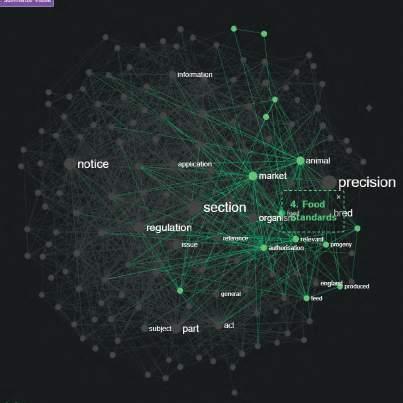
The authorization of food for the market is crucial in ensuring the safety and quality of feed, particularly for offspring. Regulatory agencies ensure that animal feed products meet standards and promote animal health through the approval process. This commitment also applies to genetically modified (GM) crops used in feed manufacturing, guaranteeing they adhere to safety standards. Stringent evaluation and authorization procedures ensure the integrity of the market and support animal welfare, which are essential factors in the use of GM crops for animal nutrition.
+ Project Inter-scalar Relationship





Our GM Crops Hub is an advanced center fostering collaboration in genetic modification. Equipped with cutting-edge labs and specialized tools, it drives research to enhance crop traits, boost productivity, and address global challenges like climate change and food security. It’s a nexus for scientists and stakeholders accelerating crop innovation.
Seed Production
The GM Crops Seed Production Facilities utilise cutting-edge technology and strict quality controls to produce large quantities of high-quality GM crop seeds. These facilities are crucial for providing farmers with reliable genetically modified (GM) seeds and advancing sustainable agriculture. With the ability to clean, process, and package seeds, they guarantee efficient production.
GMO Crops Cultivation
This facilities blend outdoor, greenhouse, and vertical farming to maximize yield sustainably. Combining traditional methods with modern techniques optimizes land use, conserves resources, and enhances crop resilience. This holistic approach ensures longterm growth of GM crops, addressing environmental concerns and fostering agricultural progress.
Education & Learning Centre Research Facilities
Our Education and Learning Centre at the GM Crops Hub is a dynamic space for teaching genetic modification. We offer workshops, seminars, and training to farmers, students, and stakeholders, fostering understanding of GM crops’ benefits, challenges, and ethics. Through collaboration and informed decision-making, we promote responsible use for sustainable agriculture.











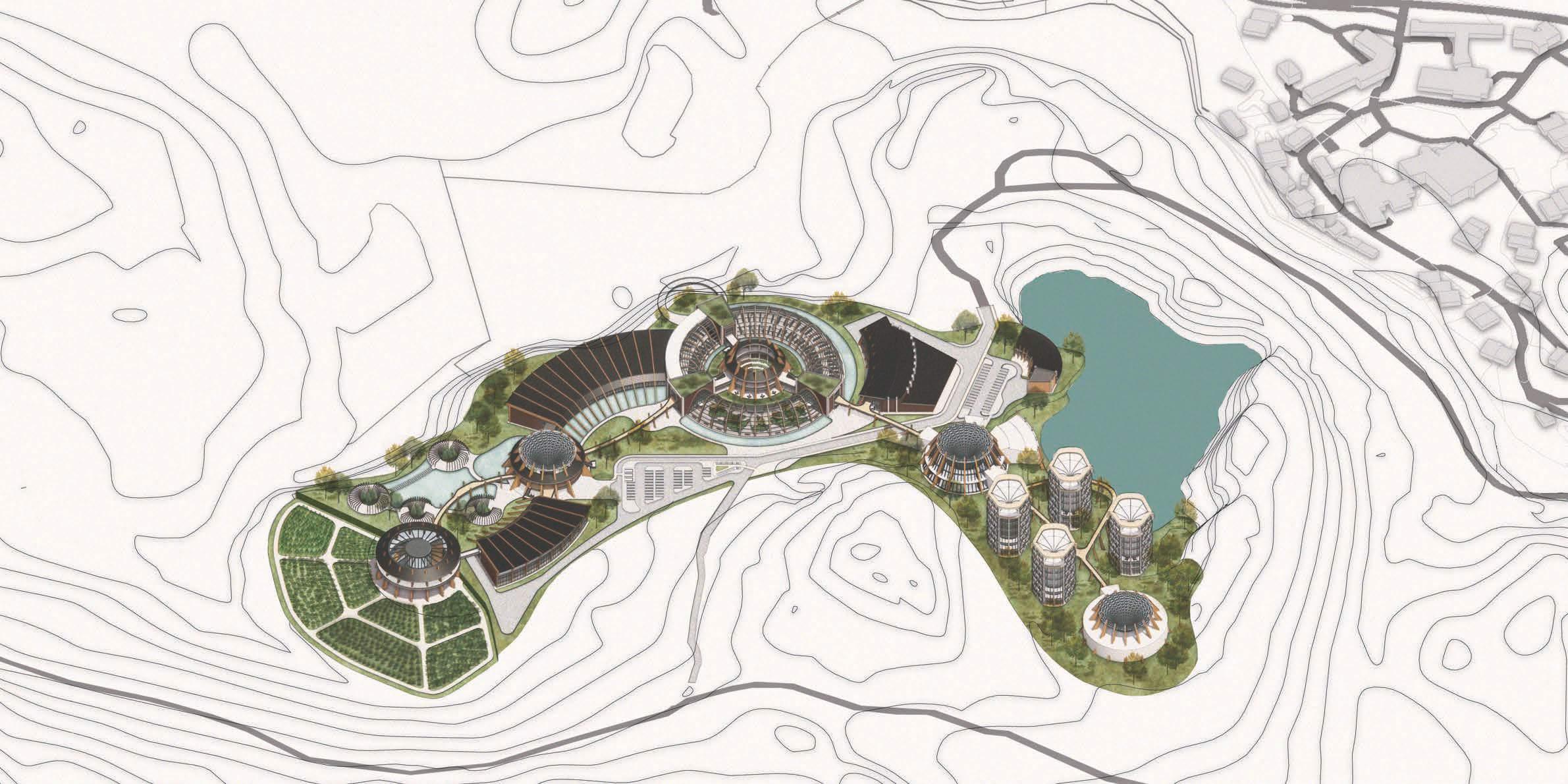
The genetically modified research center follows eight design principles to benefit researchers, farmers, and the surrounding population. The study takes into account the researcher, the local community, and public safety, hygiene, and control measures to raise awareness among socially connected individuals.

Genetic Harmony and Climate-Responsive Agriculture
Develop adaptable genetic modifications in crops to suit the evolving climate conditions of Cumbria. Promote the developmentof resilience by ensuring a wide range of genetic variations and implementing ongoing surveillance.


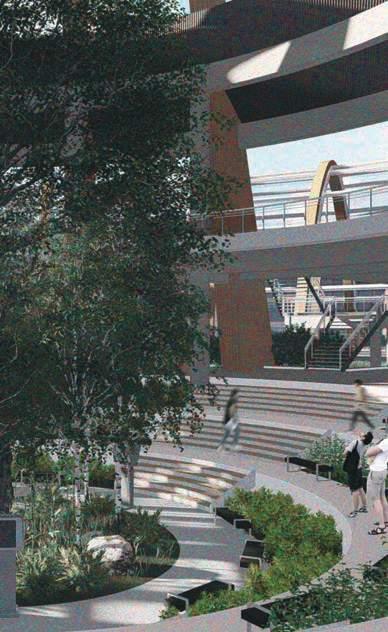
Biodiversity Integration Dynamic Learning and Research Inclusive Places
Establish biodiversity corridors that effectively link the hub with the adjacent environment. Utilise genetic modifications to augment biodiversity in both the agricultural and creating healthy ecosystem.
Create environments that promote continuous learning and research. Integrate educational programmes, interactive exhibits, and research facilities to foster a culture of ongoing learning and innovation.

Embrace inclusive design by engaging the community, both human and non-human, in the planning process, ensuring diverse perspectives contribute to a harmonious and sustainable environment for all stakeholders.

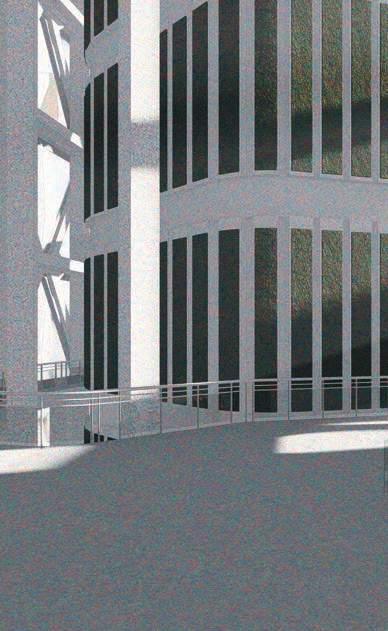
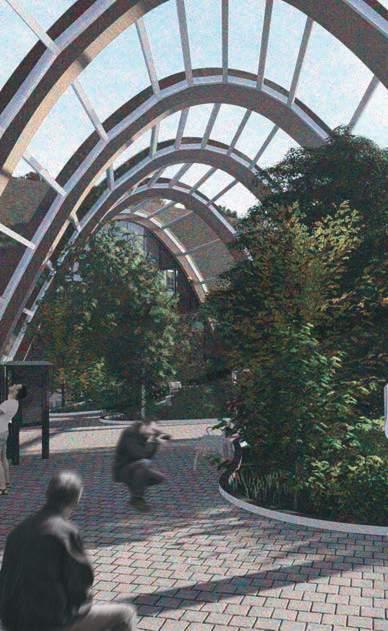

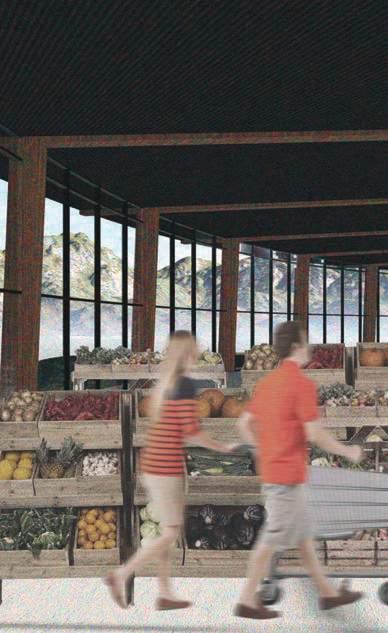
Prioritize materials and construction techniques that actively capture or reduce carbon emissions, emphasizing sustainable infrastructure design to prevent activities that release carbon, promoting a low-carbon and resilient environment.
Promote sustainable design by implementing green building techniques, giving priority to energy efficiency, and conserving natural features. This allows a seamless incorporation of ecological principles into all aspects of the design process.
Establish a bio-secure environment through rigorous design, incorporating containment measures, air filtration systems, and emergency response protocols to safeguard occupants and prevent the spread of biohazards.
Ensure inclusive access to sustainable farming technologies and practices, particularly for small-scale farmers and marginalized communities. Promote equitable distribution of resources, knowledge sharing, and capacity building to empower all stakeholders in the agricultural sector.
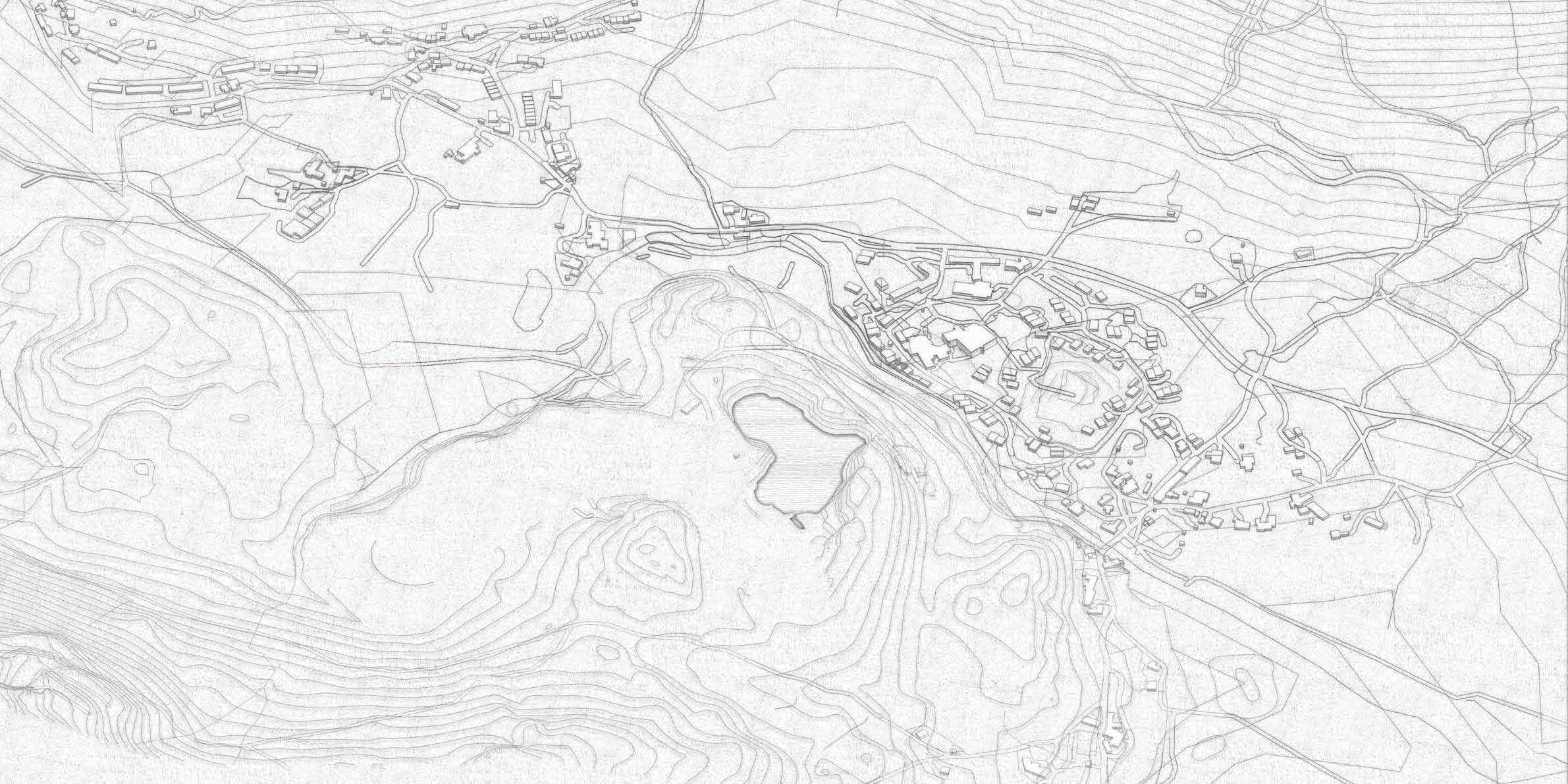


Sarah is a mother of two kids living in a rural community in Cumbria. She’s passionate about organic farming and sustainable living.

Sarah is deeply skeptical of genetically modified crops due to concerns about their potential impact on human health and the environment. She believes that GMOs may lead to increased pesticide use, loss of biodiversity, and unknown long-term consequences.
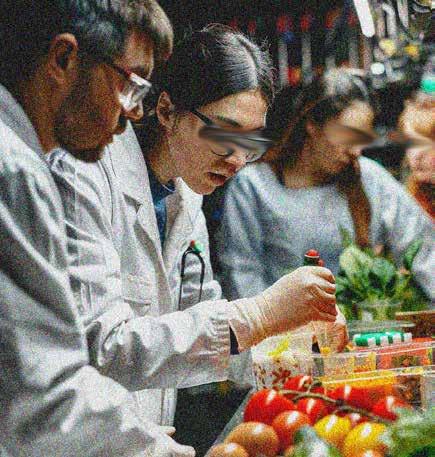
The facilities can offer Sarah transparency and educational opportunities. They could host public outreach programs, open days, and workshops to explain the research processes, safety protocols, and potential benefits of GMOs.



David is passionate about local produce and sustainable agriculture. David is cautiously curious about genetically modified crops. While he values traditional farming methods and organic produce, he’s also interested in exploring how GMOs could potentially address food insecurity and environmental challenges. However, he’s concerned about the lack of long-term studies on the health and environmental impacts of GMOs.

Our facilities can provide David with access to information and resources to deepen his understanding of GMOs. They could organize cooking demonstrations and tasting events using genetically modified ingredients to showcase their potential applications in the culinary world.
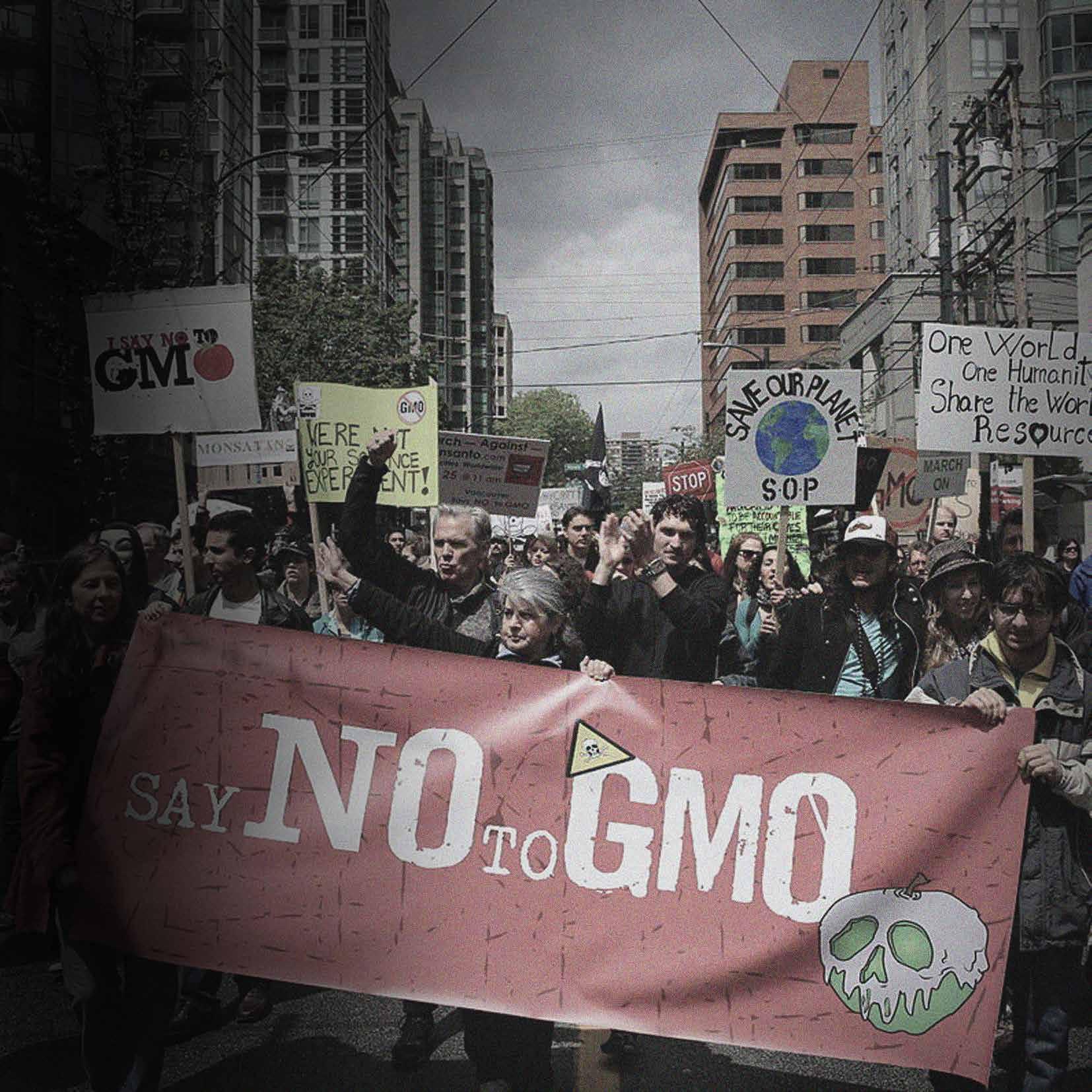




Oliver is a 7-year-old boy living in a rural village in Cumbria. He attends the local primary school and loves playing outdoors with his friends. Oliver doesn’t know much about genetically modified crops, but he understands the importance of eating healthy food to grow strong and stay active.
He enjoys fruits and vegetables but sometimes struggles to eat enough variety, especially during the winter months when fresh produce is scarce. Oliver’s parents, like many in the community, are concerned about ensuring that he gets all the essential nutrients he needs to thrive.

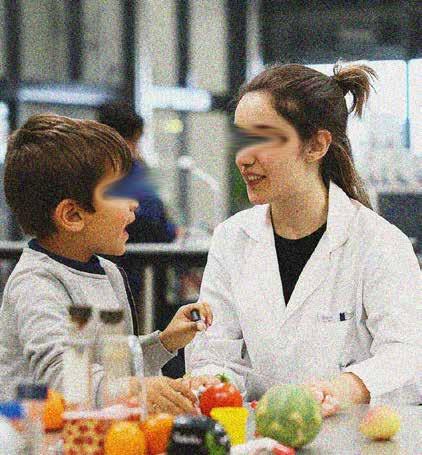
Our hub can develop genetically modified crops specifically designed to enhance the nutritional content of staple foods that children like Oliver enjoy. These biofortified crops could be distributed to local schools, community centers, and food banks, providing children like Oliver with access to healthier and more nutritious options year-round.

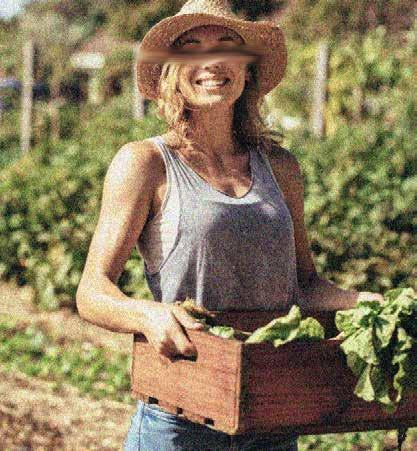
Lisa is a first-generation farmer who recently inherited her family’s small farm in Cumbria. She’s passionate about sustainable agriculture and organic farming practices. Lisa is skeptical of genetically modified crops and prefers to focus on traditional farming methods.
She’s concerned about the potential risks of GMOs to soil health, biodiversity, and long-term food security. However, she’s open to exploring alternative approaches to crop improvement that align with her values and principles.

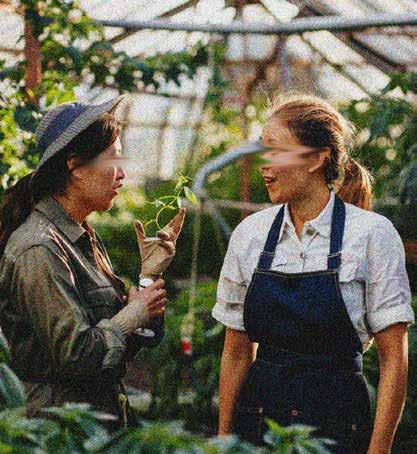
The facilities can collaborate with Lisa to conduct research on agroecological farming practices that minimize the use of synthetic inputs and promote biodiversity. They could provide her with access to organic seeds, soil health assessments, and agroforestry techniques to enhance the sustainability and resilience of her farm.




Persona 05
Dr. Michelle Ng, 42
Genetist
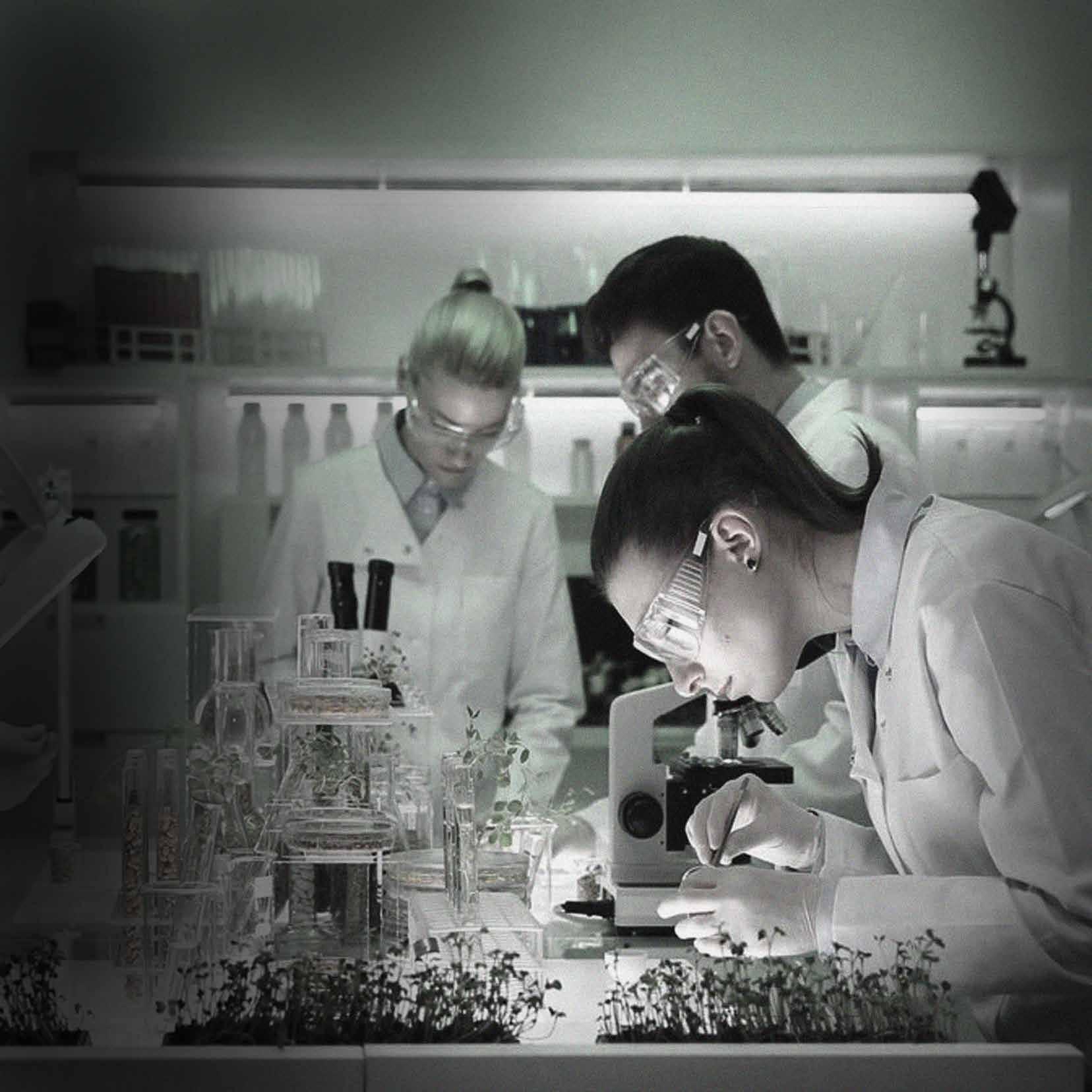

Dr. Michelle is a plant geneticist who recently joined the research team at the genetic modification research and cultivation area in Cumbria. She believes that genetically modified crops have the potential to address global challenges such as hunger, poverty, and climate change.

She’s passionate about using biotechnology to develop crops that are resilient, nutritious, and accessible to smallholder farmers in resource-constrained environments. However, she’s also mindful of the need to address social, ethical, and regulatory considerations to ensure that GMOs benefit society as a whole.
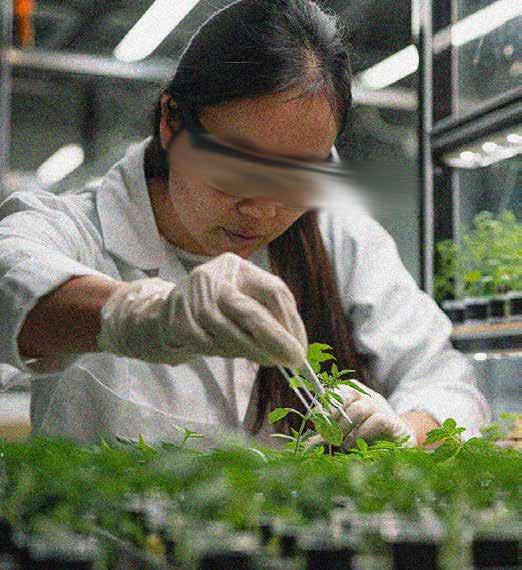
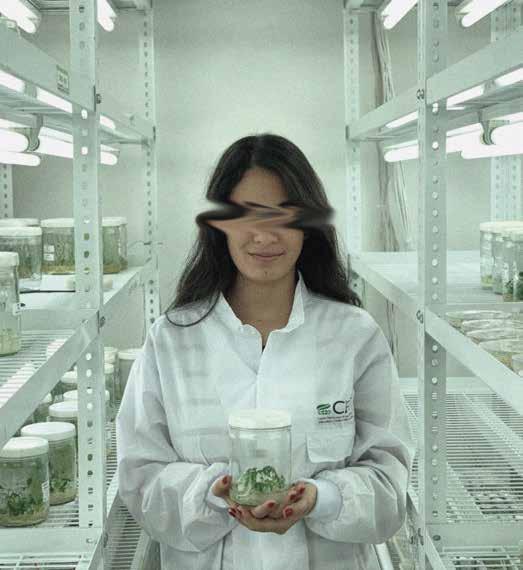
The facility can provides Michelle with a platform to pursue her research interests and collaborate with multidisciplinary teams with access cutting-edge technologies and infrastructure. The facility offers opportunities for Michelle to engage with local communities, policymakers, and NGOs to ensure that his research aligns with the needs and priorities of smallholder farmers and promotes sustainable development goals.


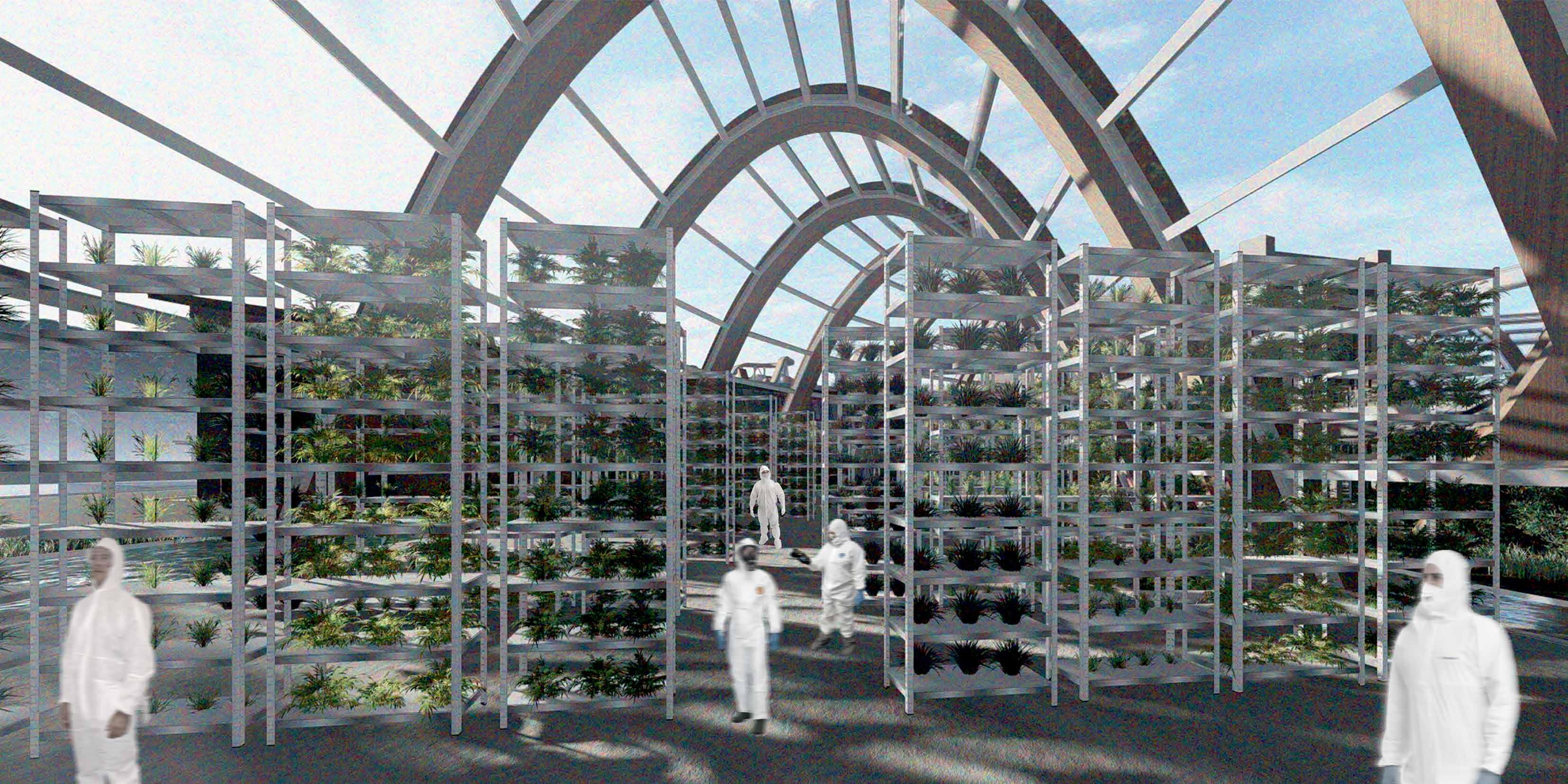
The greenhouse lab space is a regulated environment only accessible to researchers. Here, rigorous conditions are maintained to allow for accurate experimentation and observation without external disturbance. It’s a haven for scientific inquiry, where researchers may change factors and investigate genetic mutations with unprecedented precision and confidentiality.
Greenhouse | Conceptual


Our Genetically Modified Crop Greenhouse’s fundamental shape is cylindrical with a void in the middle to allow for natural ventilation, which improves aerodynamic efficiency and ensures consistent distribution of sunshine and wind, a characteristic that has proven beneficial in similar constructions. Our design is precisely aligned with the sun’s path to ensure regular sunshine exposure throughout the year, increasing farming output and operating efficiency.

Our greenhouse’s design focuses on maximising space utilisation while differentiating the type of genetically modified crop by dividing it into three areas, one of which is the building’s entrance. By carefully strategizing and developing designs, we improve layouts to successfully include indoor and outdoor Genetic Modified Gardens, as well as research trial space, while also offering adequate room for dynamic learning areas within the building.
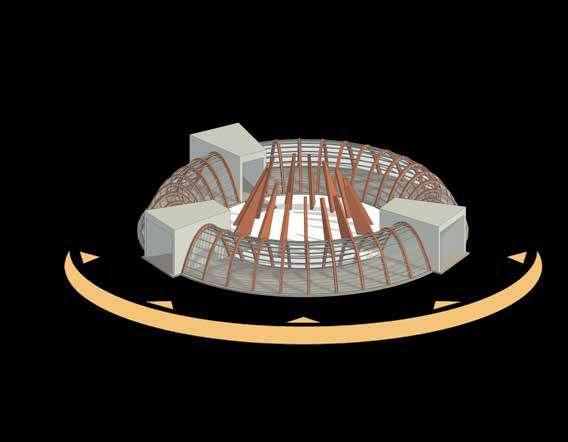
The primary material used for the greenhouse is wood, which provides a balance between durability and environmental awareness while emphasizing sustainability and usability.
In greenhouse labs and indoor gardens, in a dome shape structure with transparent materials are employed to maximize natural light penetration and encourage robust plant development. In addition, insulated materials are used to regulate internal temperatures, ensuring optimal conditions for crop productivity.

Accessibility is a top priority in our greenhouse’s internal plan, which includes integrated pathways, lifts, and stairs connecting the main entry to the internal circulation towards the seed production area and agro tower. Also, the greenhouse serves as the center of attention for the entire research facility. This makes it possible for the tourist and researcher to move together seamlessly. We promise ease of use for the maintenance, collection, and tracking procedures.
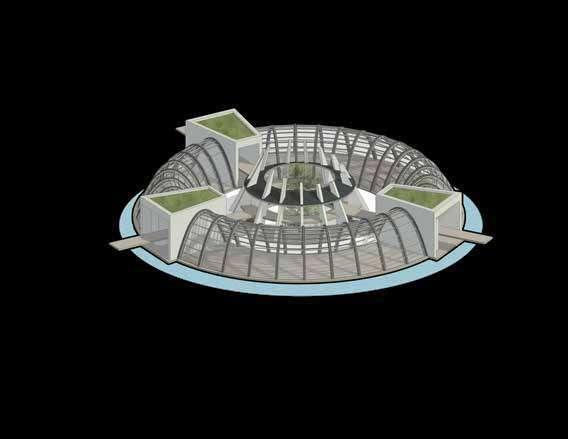
The design of our agro tower incorporates sustainability as a fundamental aspect, incorporating advanced technologies such as rainwater harvesting systems to fulfil agricultural requirements. The building incorporates biophotovoltaic panels that efficiently capture solar energy to provide power for its operations. This all-around approach makes sure that our farming activities are sustainable, protect the environment, and use resources wisely.
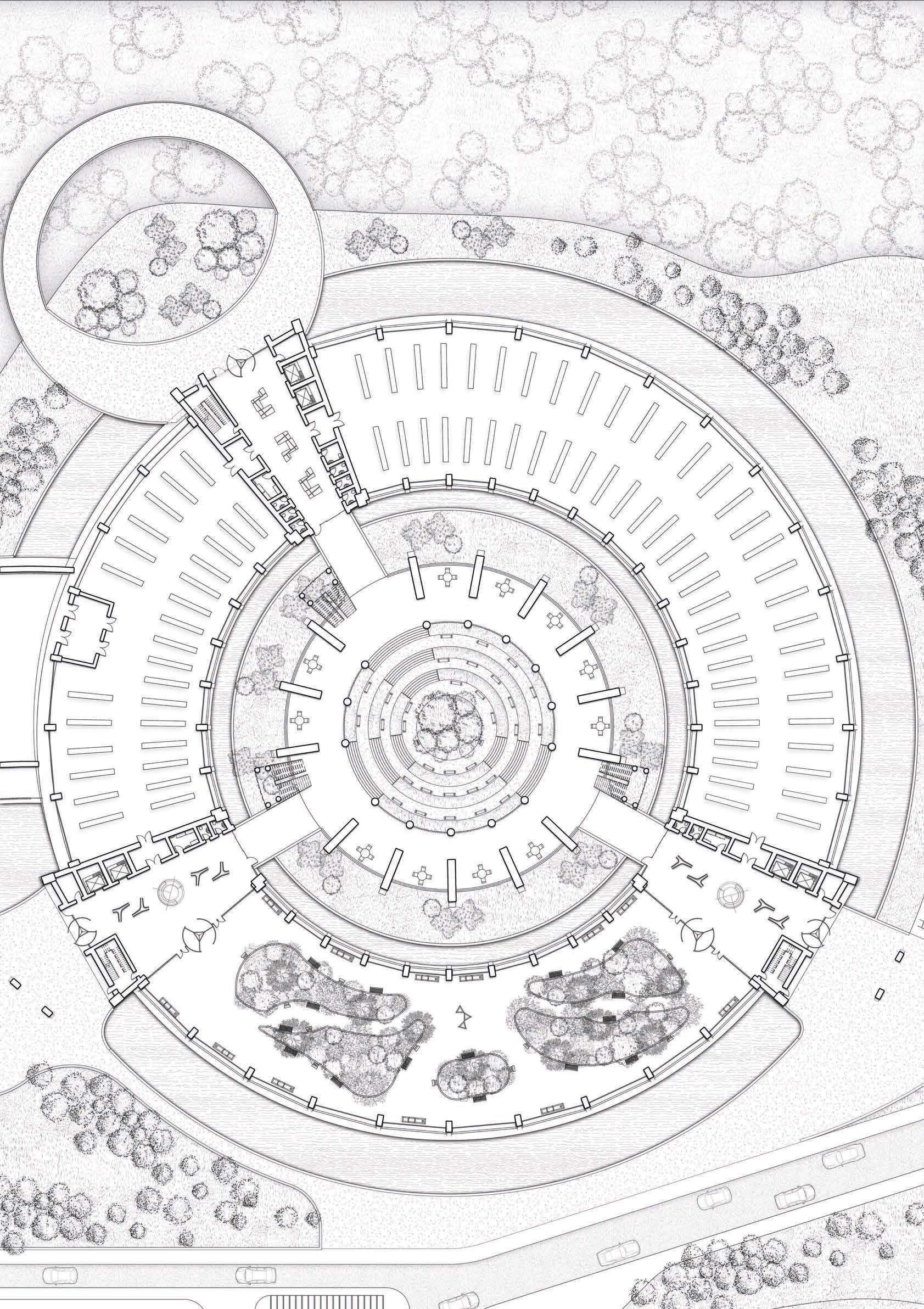

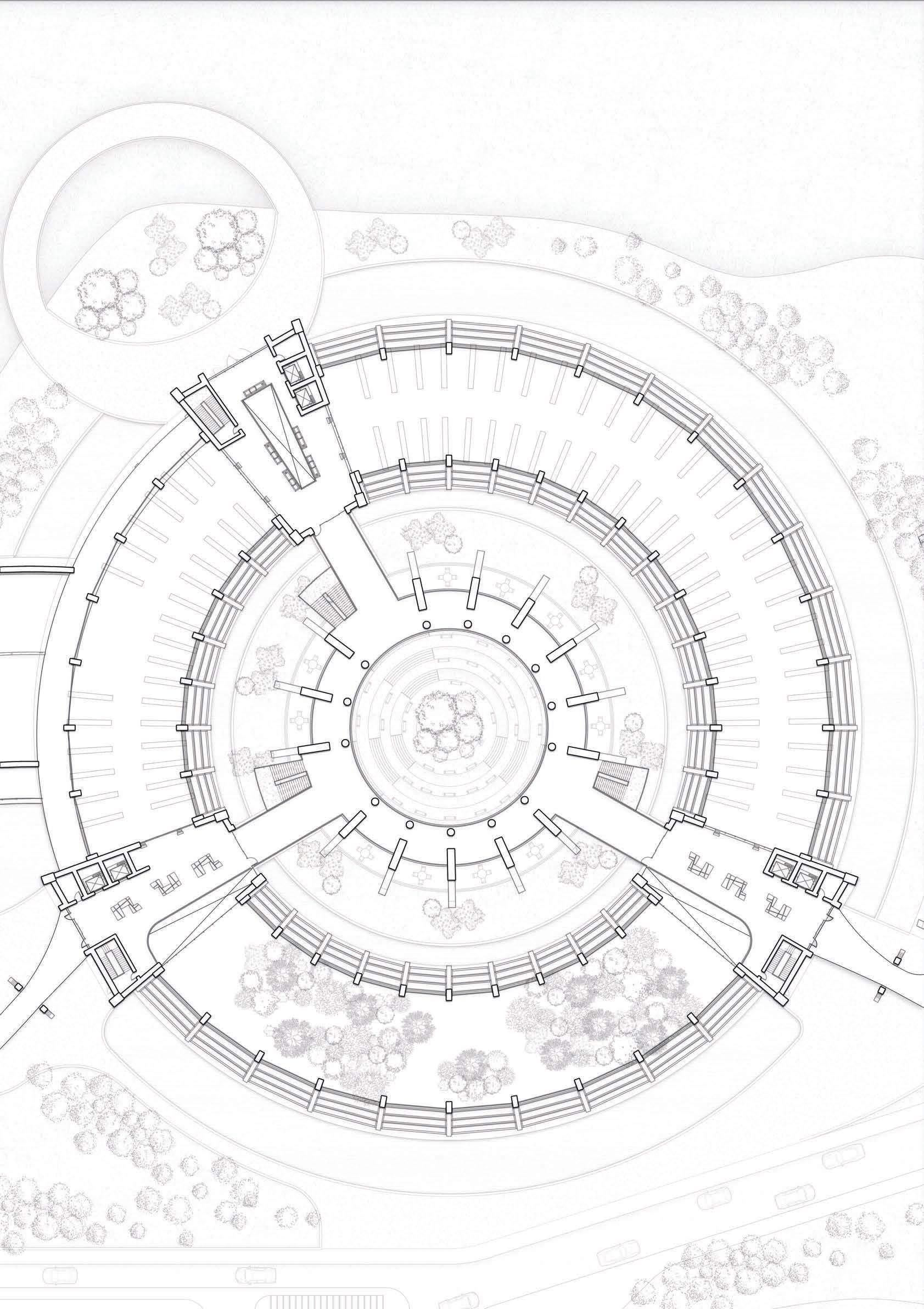








By encouraging community involvement, The Greenhouse gives residents the tools they need to take part in efforts to restore biodiversity. By demonstrating how genetically modified crops can help rehabilitate post-industrial areas, it encourages cooperation among stakeholders to create a stronger, more resilient ecosystem.
The goal of genetically modified crops in Cumbria’s post-industrial areas is to produce robust plant varieties that improve soil quality, draw in a variety of fauna, and foster biodiversity—all of which help to revitalize the ecosystem and enable sustainable coexistence.
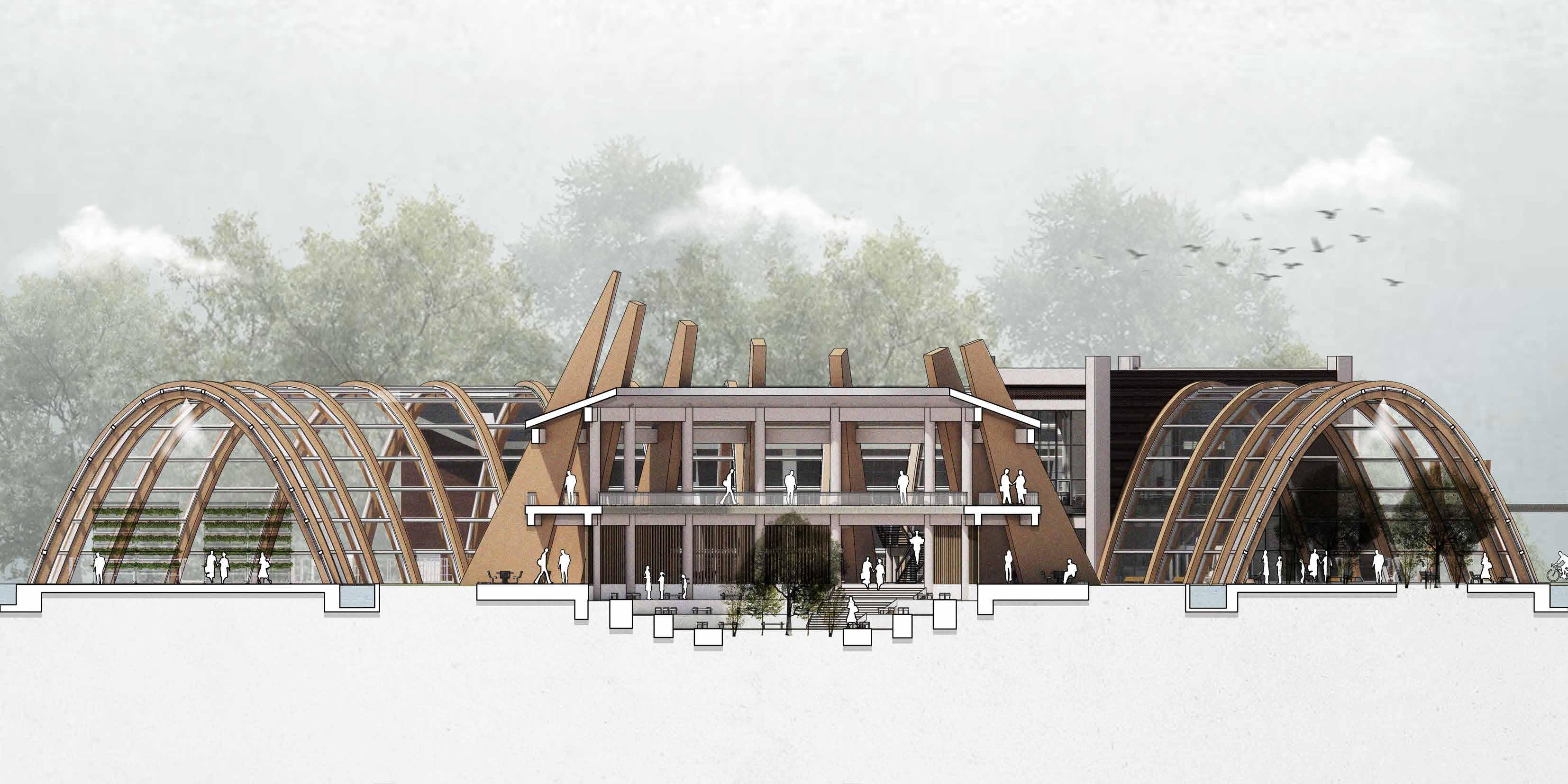
+ Scale 1:100 on A1
Sheffield Winter Garden As Precedent Study
The foundation of the Sheffield Winter Garden, which consists of anchorbased plates with anchor bolts, supports the glass and steel structure. This anchoring mechanism maintains structure integrity and resists environmental influences. Studying this foundation design provides insight into anchoring solutions for large-scale architectural projects that require stability and endurance
A) Greenhouse Structure Detail 1:25 on
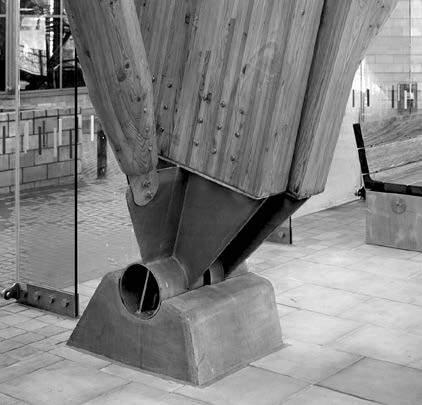

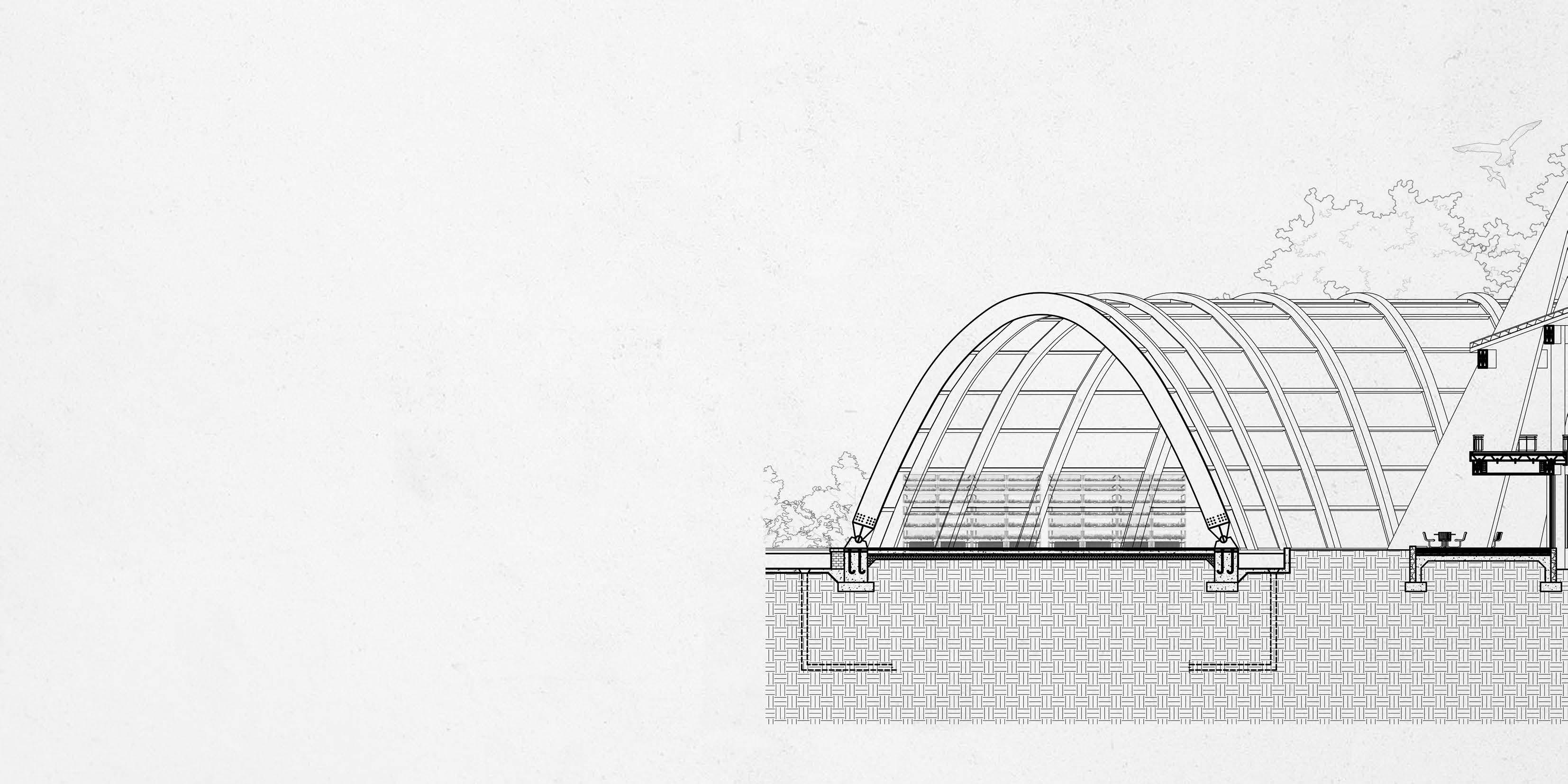
Sand and cement screed
Wool

+ Exploded Axonometric

Percantage of Materials Source in Cumbria :
Percantage of Recycled Materials :
Percantage of Material Sourced on Site:
Percantage of Material



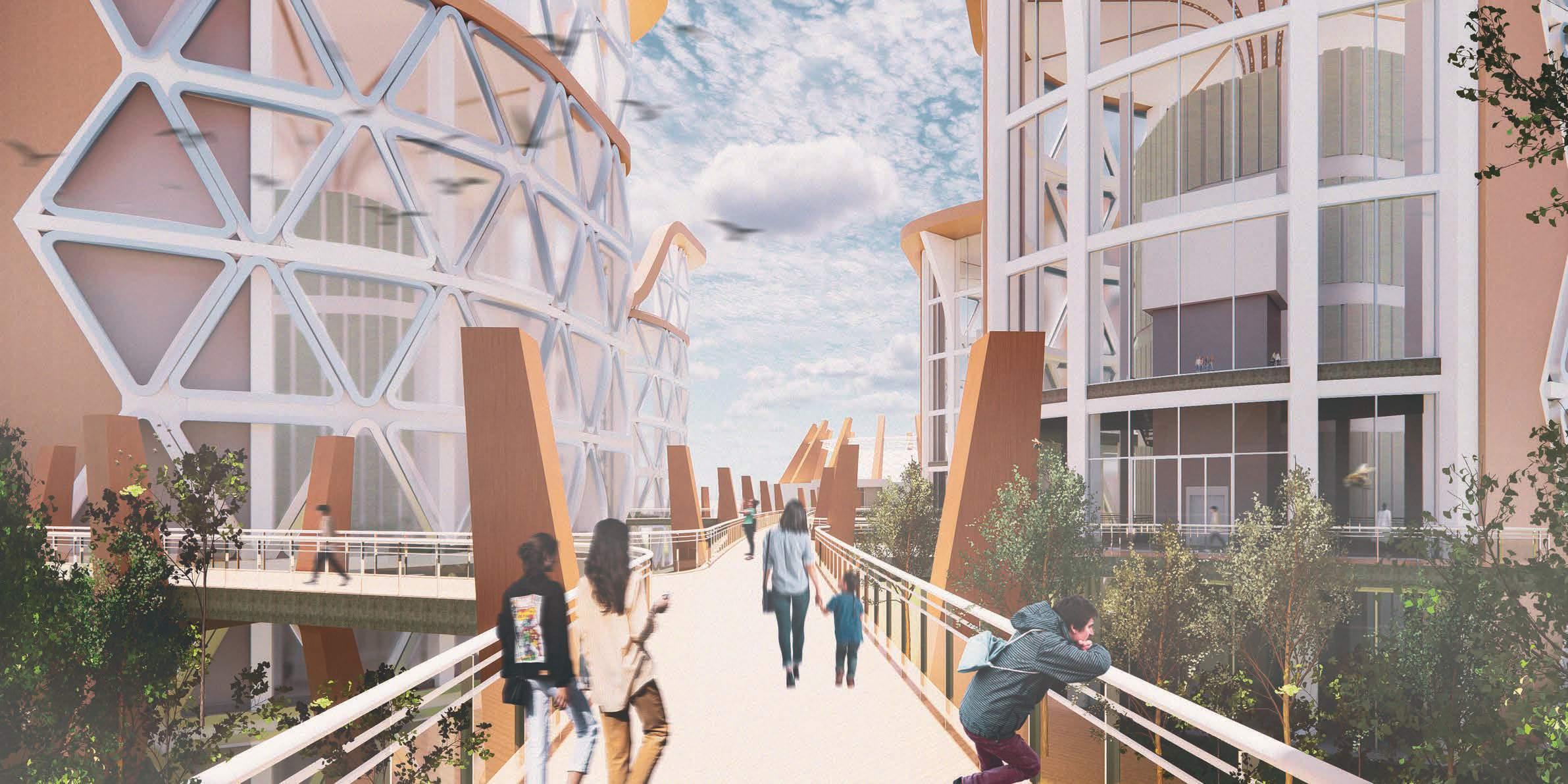
The design of our agro tower incorporates our fundamental principles, effectively integrating cutting-edge technology to improve efficiency and greatly increase crop productivity. Through the utilisation of advanced techniques such as genetic modification and precision agriculture, our objective is to grow crops of exceptional quality, providing our discerning consumers with unmatched taste and nutrition.

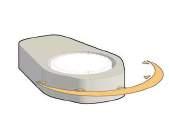
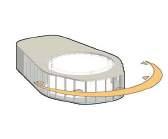
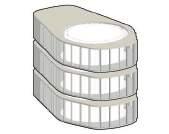
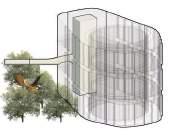
Our vertical farming tower’s basic shape is cylindrical, as it enhances aerodynamic efficiency and guarantees a consistent distribution of sunlight, a feature that has proven successful in similar structures. Our design strategically aligns with the sun’s path to ensure that there is a consistent amount of sunlight exposure throughout the year, which maximises farming productivity of the genetic modified crops and operational efficiency.


The design of our agro tower focuses on maximising space utilisation by creating working areas that seamlessly combine functionality and efficiency. By carefully strategizing and improving designs, we enhance layouts to effectively incorporate planting, maintenance, and harvesting activities, while also providing ample space for dynamic learning areas within the building.
Our choice of materials for the agro tower strikes a balance between environmental consciousness and durability, with a focus on sustainability and functionality. In order to maximise natural light penetration and promote strong GM plant growth, transparent materials are used. Furthermore, insulated materials are incorporated to control interior temperatures, guaranteeing ideal circumstances for agricultural output.
The modular system of our agro tower is designed to incorporate sustainability principles. We enhance and improve interchangeable modules by utilising environmentally friendly materials and energy-efficient technologies. This promotes flexibility, reduces inefficiency, and maximises the utilisation of resources, thereby cultivating a sustainable agricultural environment within the tower while mitigating its environmental footprint.
The internal layouts of our agro tower are designed to prioritise accessibility by integrating pathways, lifts, and stairs. This allows for seamless movement among the farming modules. We guarantee convenience in the upkeep, gathering, and monitoring processes.
In the tower’s agricultural ecosystem, elevated entrances reduce human footprint, promote biodiversity, and enable smooth interaction.
The design of our agro tower incorporates sustainability as a fundamental aspect, incorporating advanced technologies such as rainwater harvesting systems to fulfil agricultural requirements. The building incorporates biophotovoltaic panels that efficiently capture solar energy to provide power for its operations. This all-around approach makes sure that our farming activities are sustainable, protect the environment, and use resources wisely.
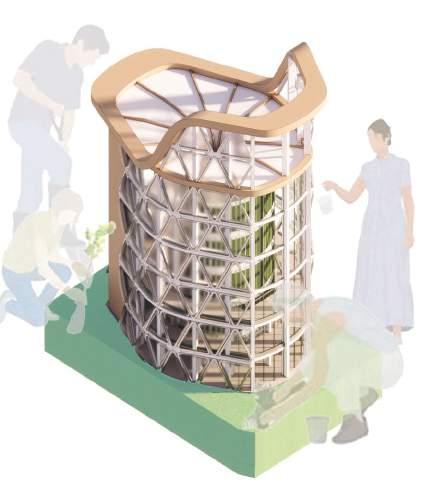
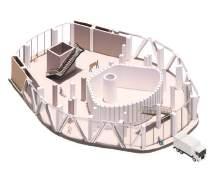
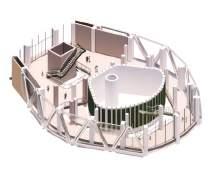

It is allocated for services area. Where all the maintenance activity will be done on this floor. This area is not open to public as the building management may have to manage maintenance regularly. without being interrupted by the visitors. Also to ensure the safety and comfort for all building users.
Main lobby and viewing deck. Main entrance for the building. The visitors ca appreciate the decking area to view interior and exterior part of the building.

Collaborative space. This area offer opportunities for learning and professional development through advance discussion while meeting with the on-site researchers. It serve as a hubs of discussion, creativity and collaboration that enhance the overall experience of visitors and researchers.

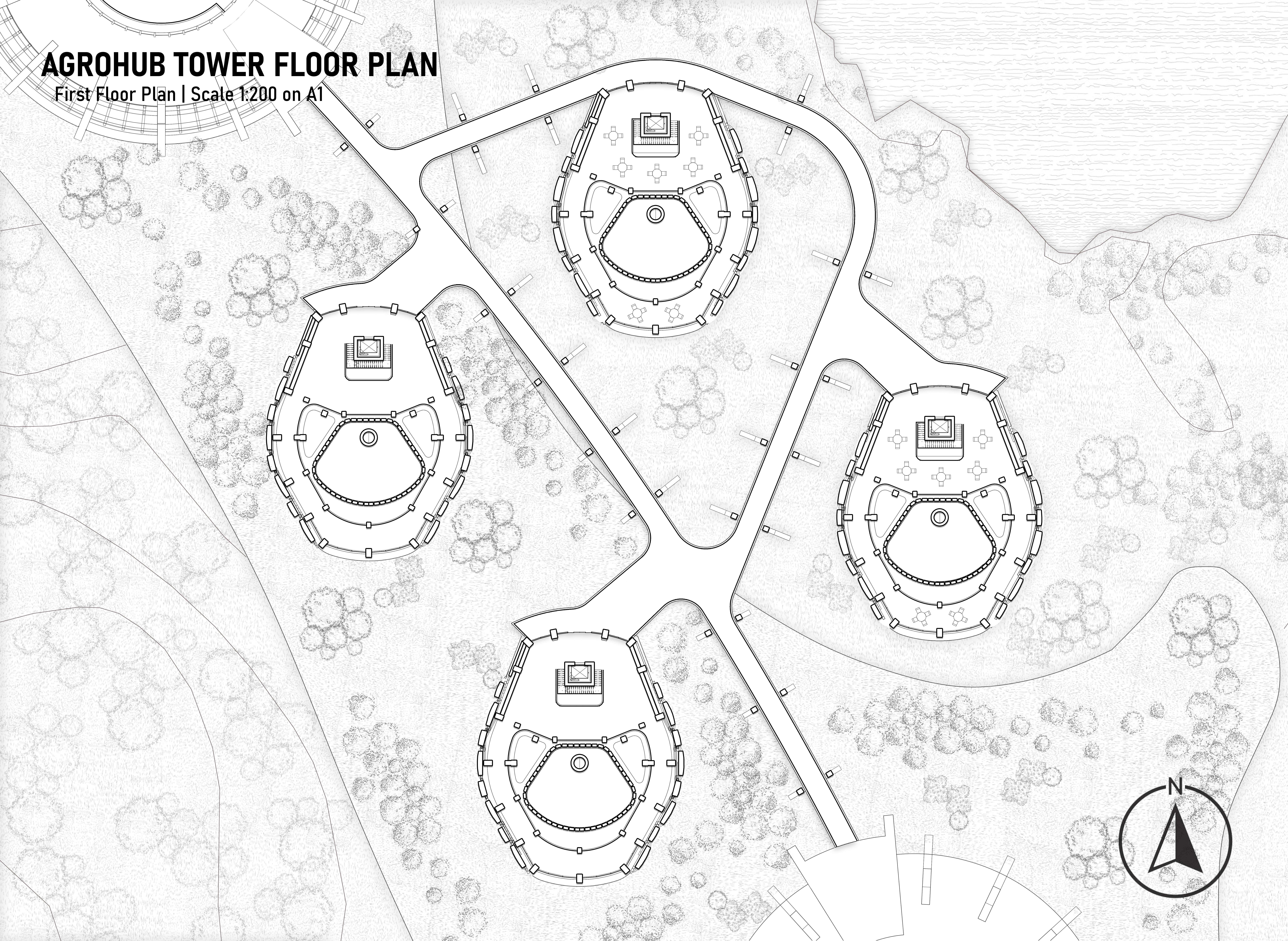


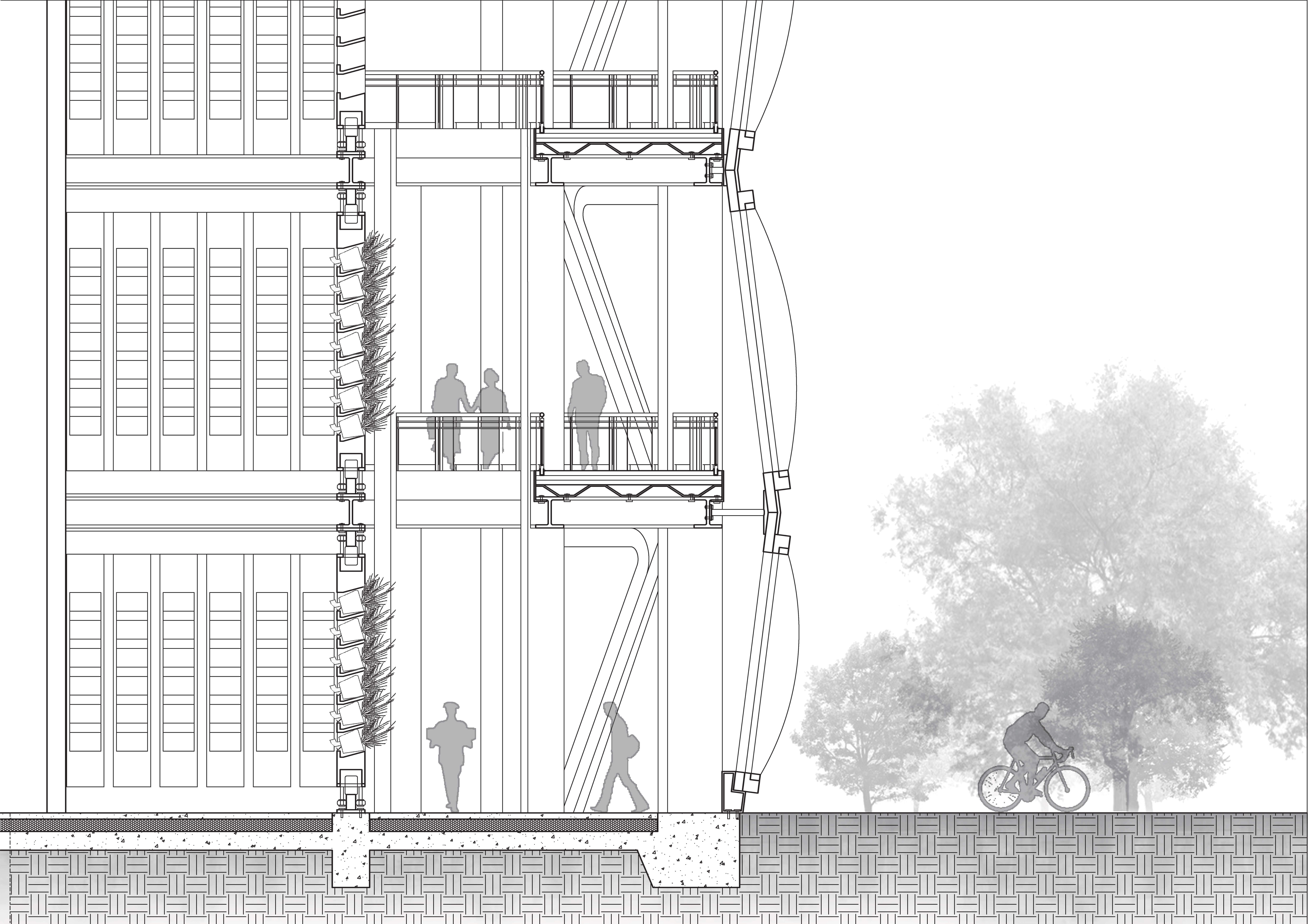
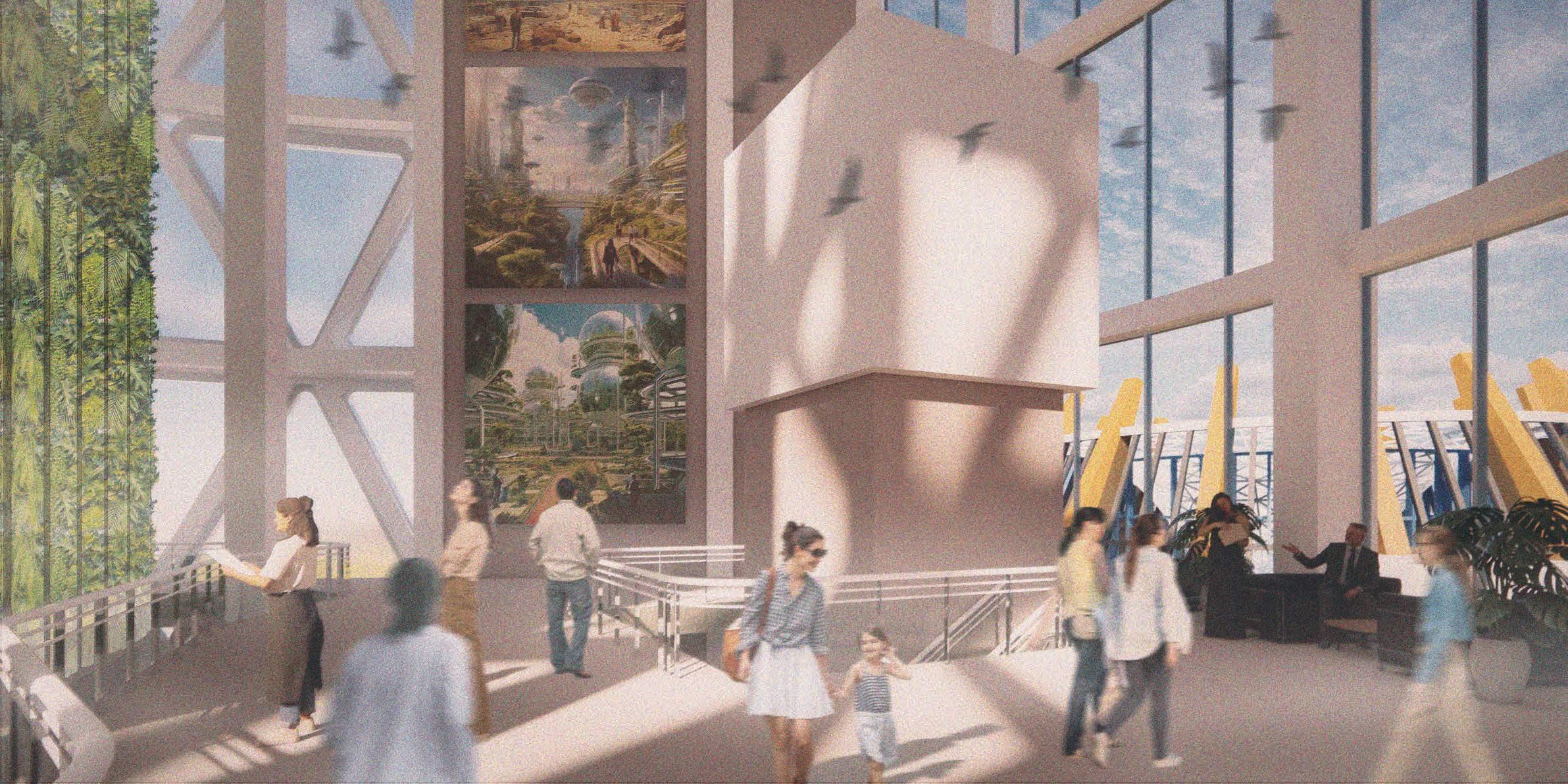
Perspective view interior part of Agro Tower. This shows how the users are experiencing the space
Perspective view that shows the interaction of visitors and researchers around the cultivation tower
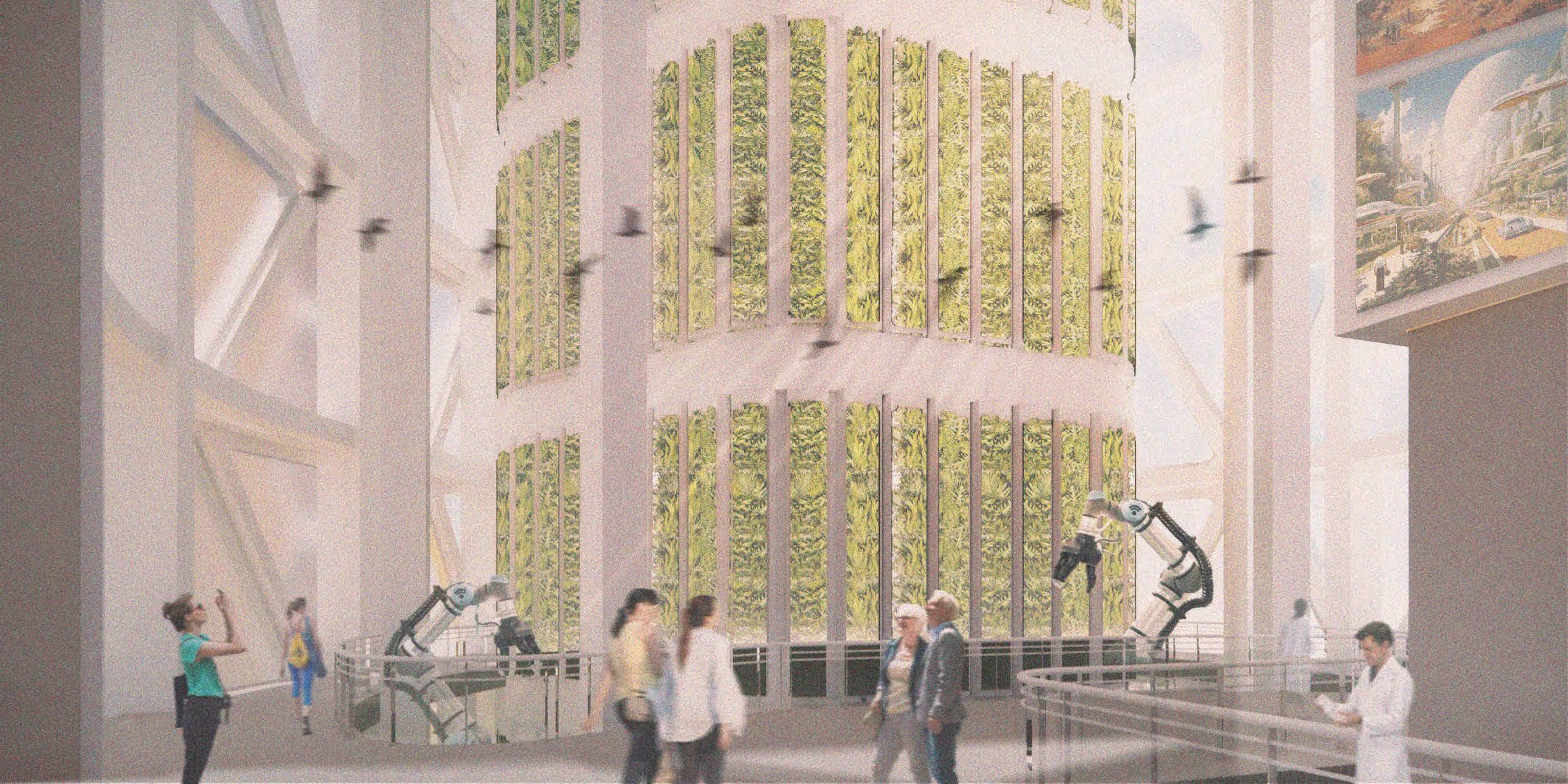
The greenhouse utilises a rotating tower to guarantee equal distribution of sunlight to all plants, thereby optimising their growth potential. In addition, our vertical farming system employs aeroponics, which involves using mist as a nutrient medium. This method optimises water usage, facilitates nutrient absorption, and promotes plant development, all while minimising resource utilisation, thus demonstrating sustainable and productive farming practices.
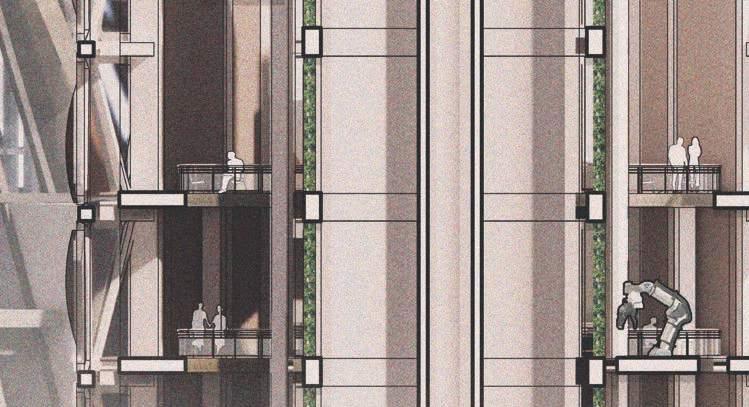




Robotic arms are essential for automating tasks like positioning cultivation pots and harvesting fully grown crops. These advanced robotic systems function with accuracy and effectiveness, guaranteeing timely and precise positioning while minimising the need for manual labour. Through the seamless integration of technology, we optimise productivity and streamline processes to achieve sustainable agriculture.

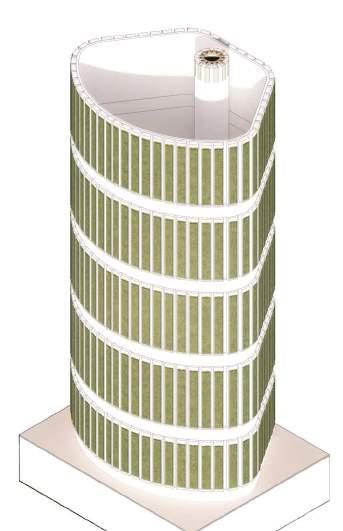
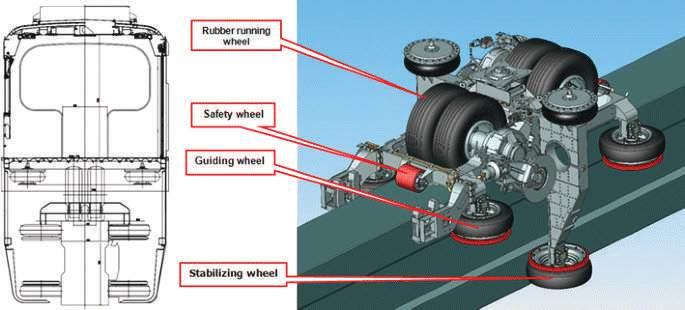




Perspective view that shows the facade of Agro Towers from the outside
The design of our agrohub tower incorporates ETFE ( Ethylene Tetrafluoroethylene) cushion material, which optimises the use of natural light while minimising energy consumption. The lightweight, durable, and transparent properties of ETFE decrease the requirement for artificial lighting and heating, thus encouraging sustainable practices.
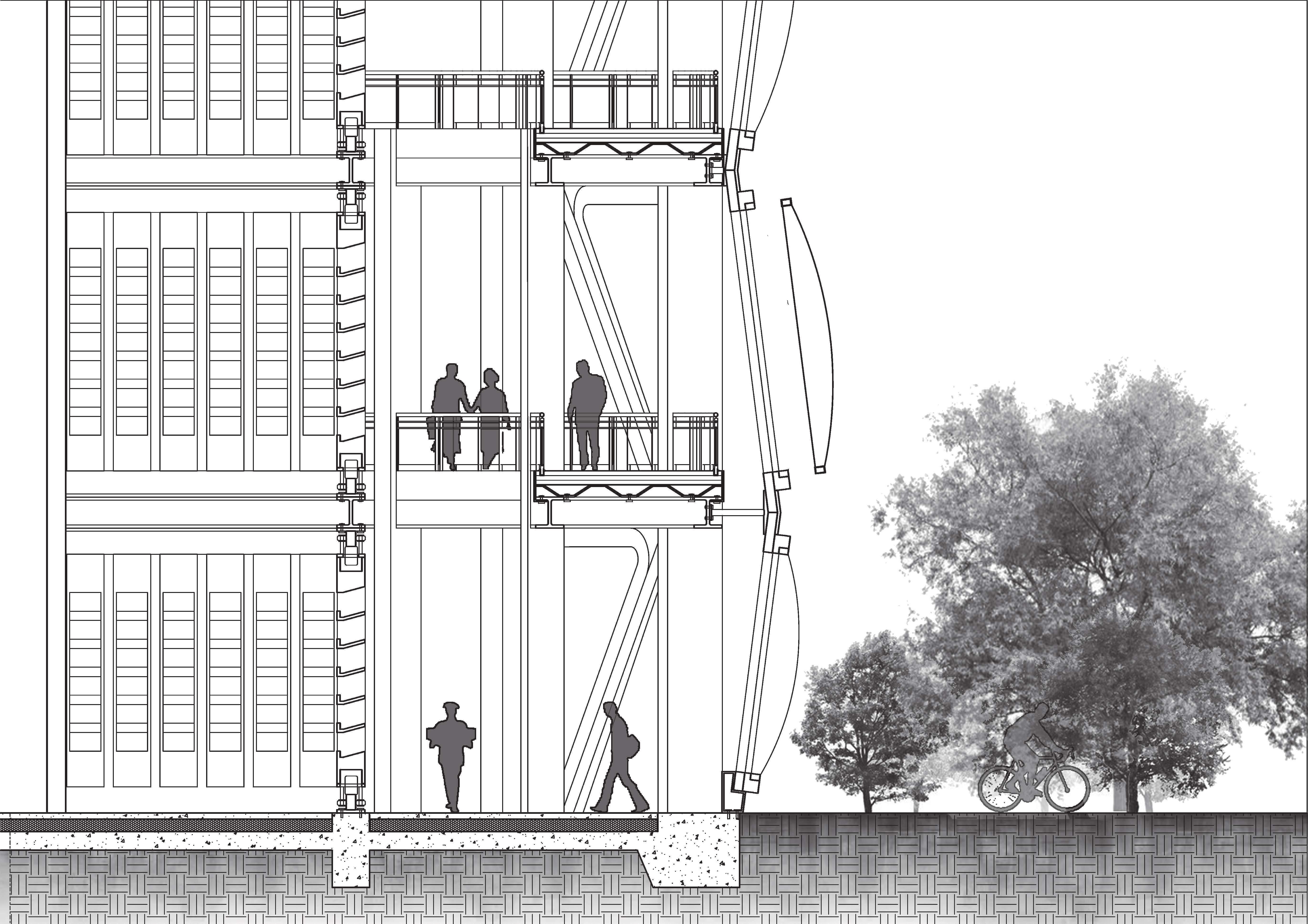

The facade design prioritizes adaptability to diverse climates and weather conditions. Utilizing ETFE framing that can be opened like windows enables natural ventilation, fostering interaction between genetically modified crops and beneficial insects like bees for pollination, enhancing biodiversity.


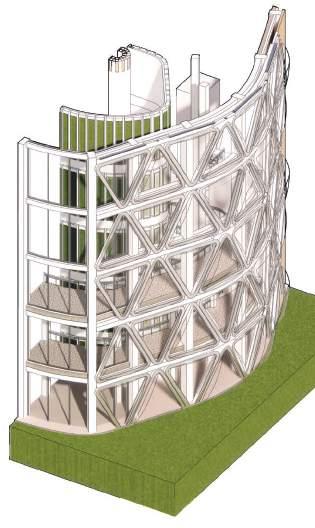

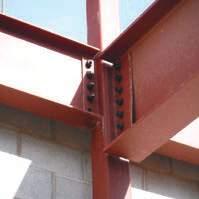




Perspective view that shows relation between the visitors and the space. Which they can experience of viewing the landsccape within the hub
Openable windows within the facade structure to allow for ventilation
Mechanical louvres along the southfacing facade to give partial shade and protect plants from overexposure

Rainwater Harvesting System
Blue pipes are to provide cooling effect to the building.
This lines indicates the capillaries and pipe that run along the building for plants watering and nutrients system.
The water collected will be used for cultivation fascilities and toilet flushing.The filtration process will be happening at the underground. Underground tank, filtration and pipe division


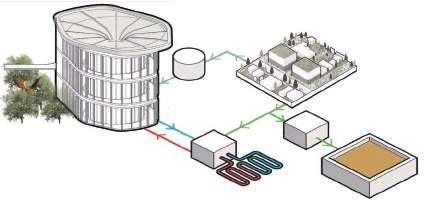

During summer, the steel frame facade will be covered with microalgae at its highest. Through the reaction of photosynthesis, algae, water, nutrients and carbon dioxided, will result in the production of biofuel. This may generate the necessary energy for the building.
Heat Recovery System Using Compost
Greenhouse require a significant amount of energy for heating, especially during winter season. This heat recovery system proposed is to aid and provide maximum enegy efficiency by collecting food waste from the neighbourhood town and turn them into natural compost to generate heat within the greenhouse.
This system will help to regulate temperature more efficiently in mantaining a stable temperature for plants growth and will help to ensure that plants receive the consistent amount of warmth they need to thrive.
The AgroHub Tower is a state-of-the-art facility specifically designed for the cultivation of genetically modified crops that have been approved for consumption. Collaborating with other research facilities is of utmost importance, as it promotes community engagement and the exchange of knowledge. Our tower is equipped with cutting-edge technology, which guarantees optimal productivity while placing a high priority on sustainability.
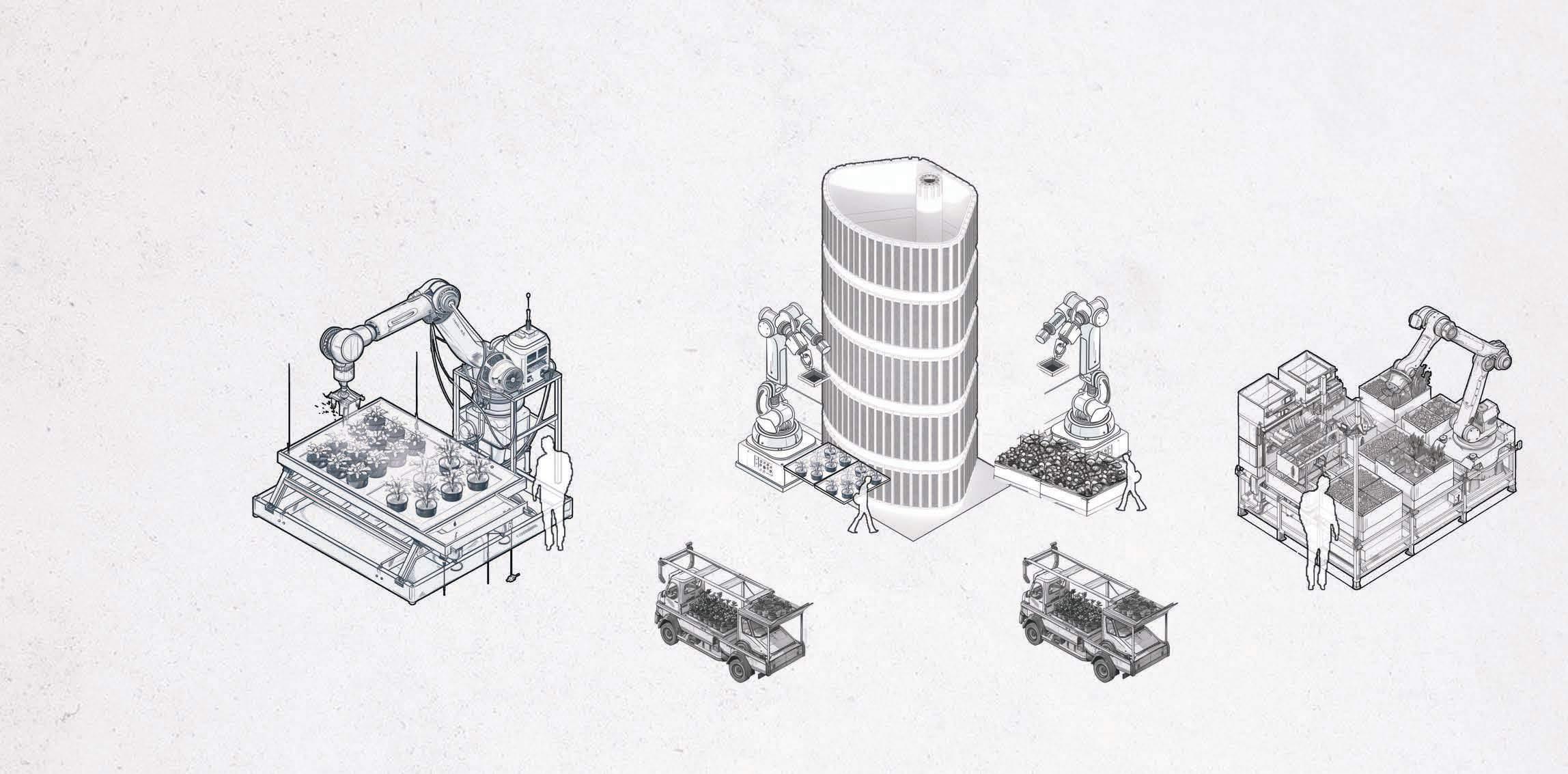
Utilizing precision agriculture methods, our cultivation and harvesting facilities cultivate genetically modified crops efficiently, maximizing yields while minimizing environmental impact through tailored crop management.

Our packaging and distribution facilities allow the effective and secure transportation of genetically modified crops to global markets, ensuring the preservation of product quality and freshness to meet the expectations of consumers and agricultural stakeholders.
“THE END”

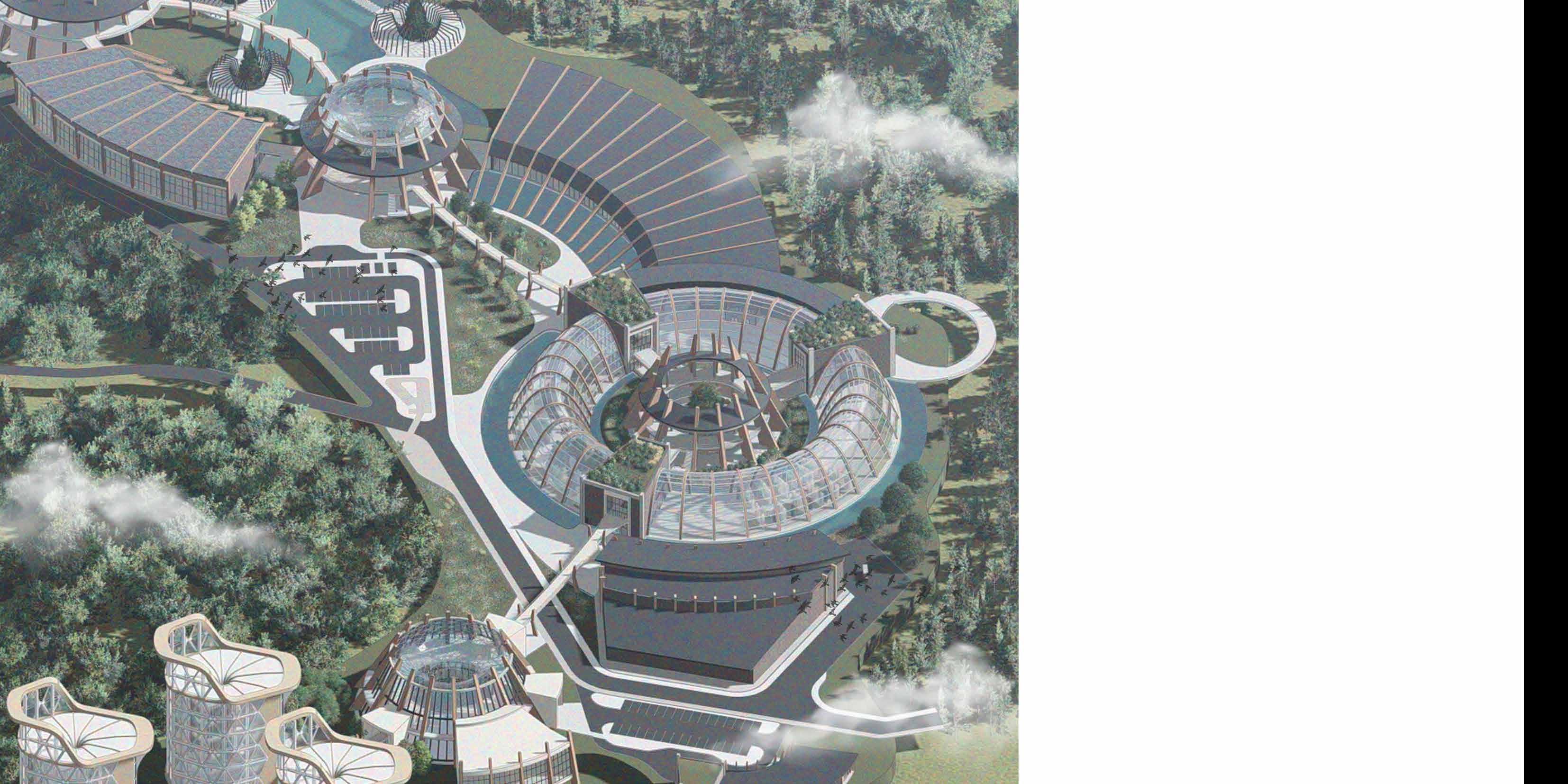


I greatly appreciated the opportunity to work together on my final design thesis, particularly with my partner whose contributions were indispensable in the creation of graphics, ideas, and concepts. Our collaborative endeavour resulted in a thorough, complex, and speculative investigation, surpassing my individual capabilities. Participating in this project has been an illuminating experience, stimulating profound introspection regarding my contribution to shaping sustainable futures. By working together and coming up with new ideas, have personally seen how scientific investigation can effectively tackle urgent social problems.
This experience has expanded my viewpoint, imbuing me with a sense of duty to promote environmental stewardship and economic resilience.
I have acquired an understanding of the significance of interdisciplinary methodologies and community involvement in facilitating beneficial transformations. Upon contemplating my contributions to this project, I am motivated to persist in promoting sustainable practices, while being conscious of the interdependence between human prosperity and the wellbeing of the planet. This integration demonstrates our dedication to the progress of agricultural technology while also acknowledging and valuing the cultural and environmental aspects of Elterwater.
Upon reaching the pinnacle of my architectural master’s program and finishing my thesis on the Genetic Modified Research Centre, find myself thinking back on the deep development and education that have characterized this journey
would want to express my gratitude to my project partner, who made the process of working on my final design thesis very enjoyable and who was very helpful in developing the ideas, concepts, and graphics. This project won’t be as elaborate, complex, and theoretical if I work on it alone, in my opinion, than our design thesis. also want to express my gratitude for all of my lecturers’ advice and mentoring along this journey.
This thesis process has been a transformative chapter in my academic and personal development. I have not only deepened my understanding of architectural principles and design methodologies but have also honed critical thinking skills, problemsolving abilities, and resilience in the face of challenges. Each setback was an opportunity for growth, each success a testament to perseverance and dedication.
As I move on in my career, I will carry with me the lessons and skills learnt during the thesis process. am excited to apply them in real-world settings, to continue learning, and to make a meaningful contribution to the subject of architecture. The voyage does not end here; it is merely a stepping stone to a future full of limitless possibilities and opportunity for continued development and exploration.
